Balluff BISL303 Non-Contact Read/Write System User Manual L60 2 019 828132 1007 e p65
Balluff Inc Non-Contact Read/Write System L60 2 019 828132 1007 e p65
Balluff >
Contents
- 1. User Manual (1 of 2).pdf
- 2. User Manual (2 of 2).pdf
User Manual (1 of 2).pdf
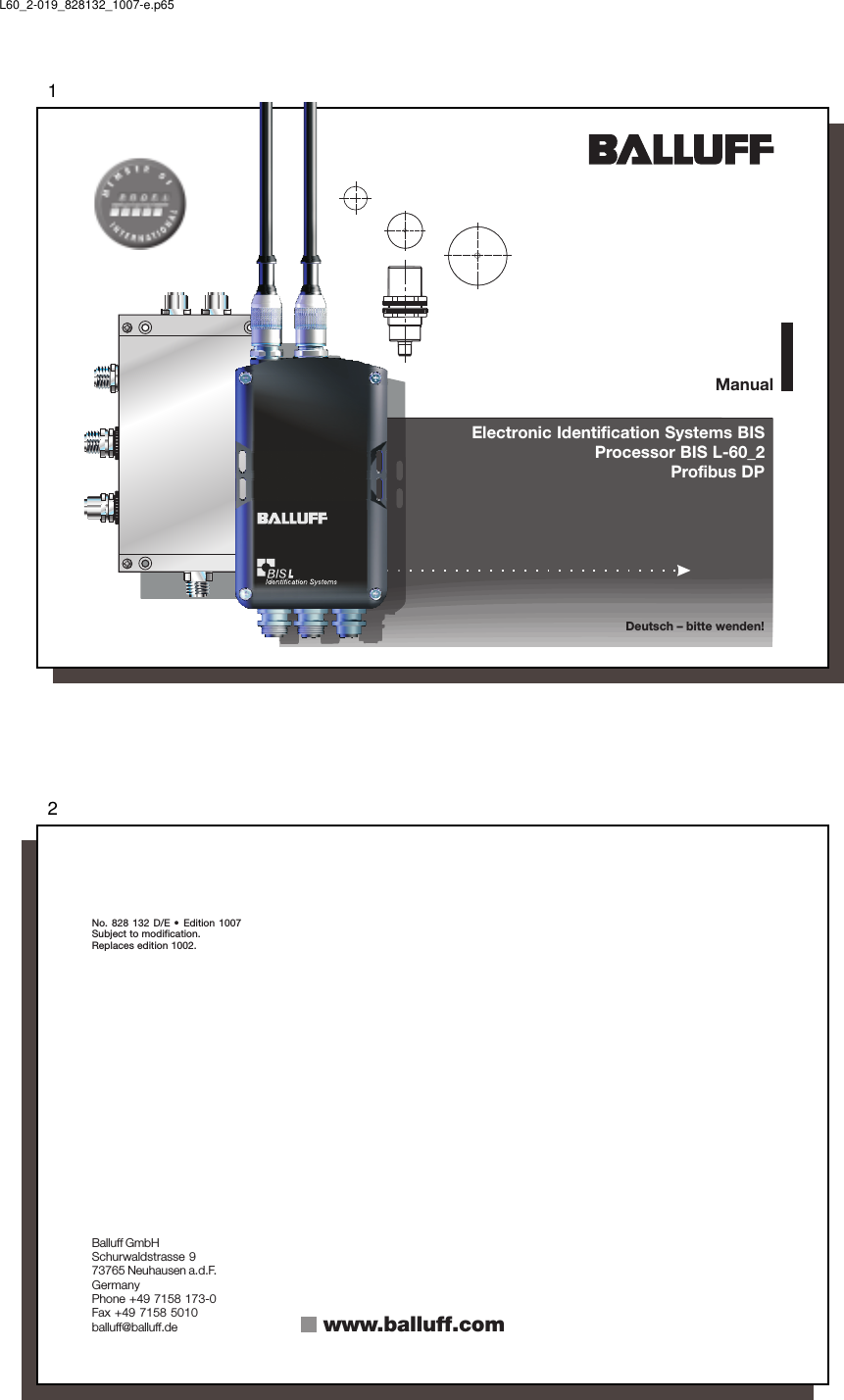
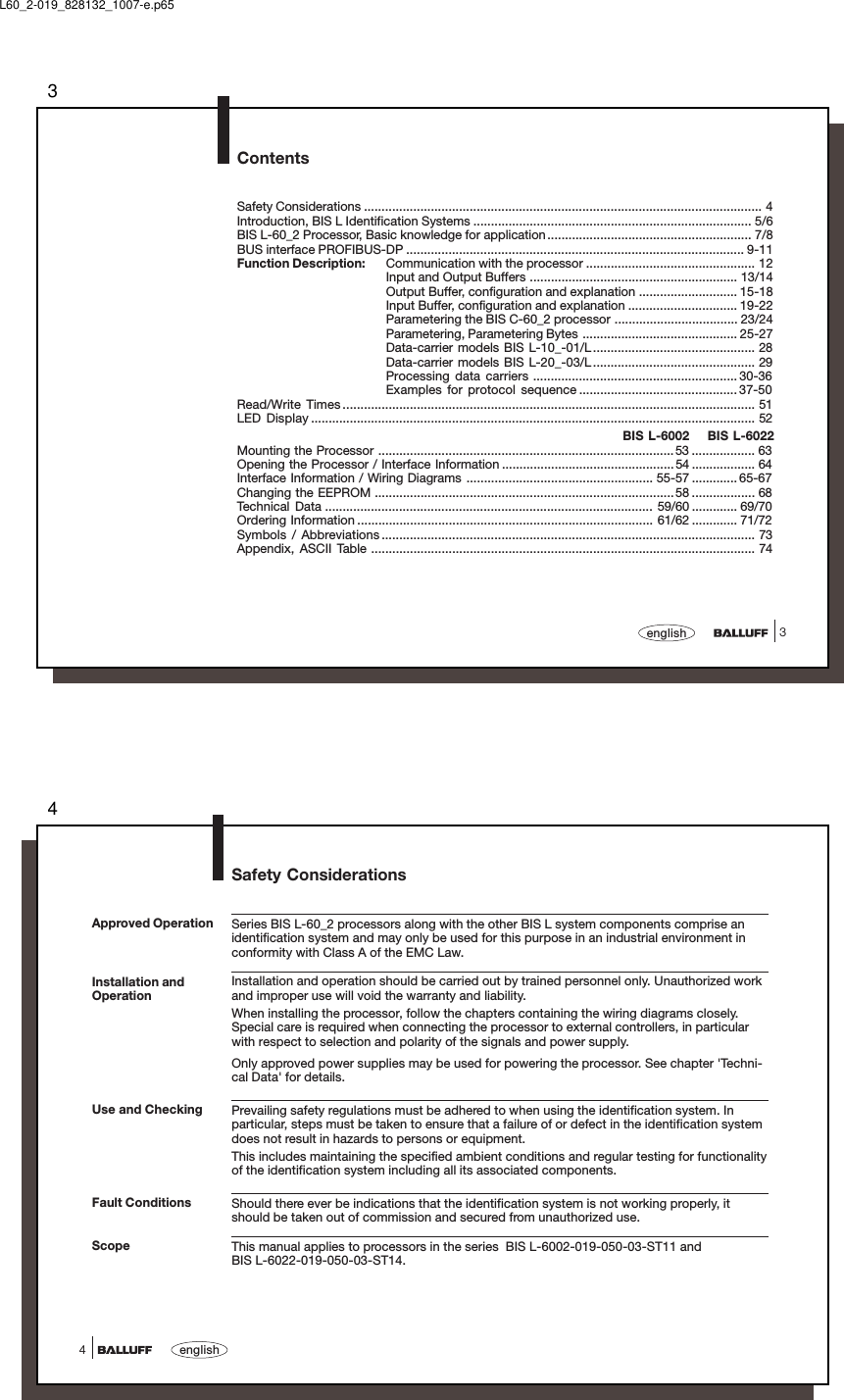
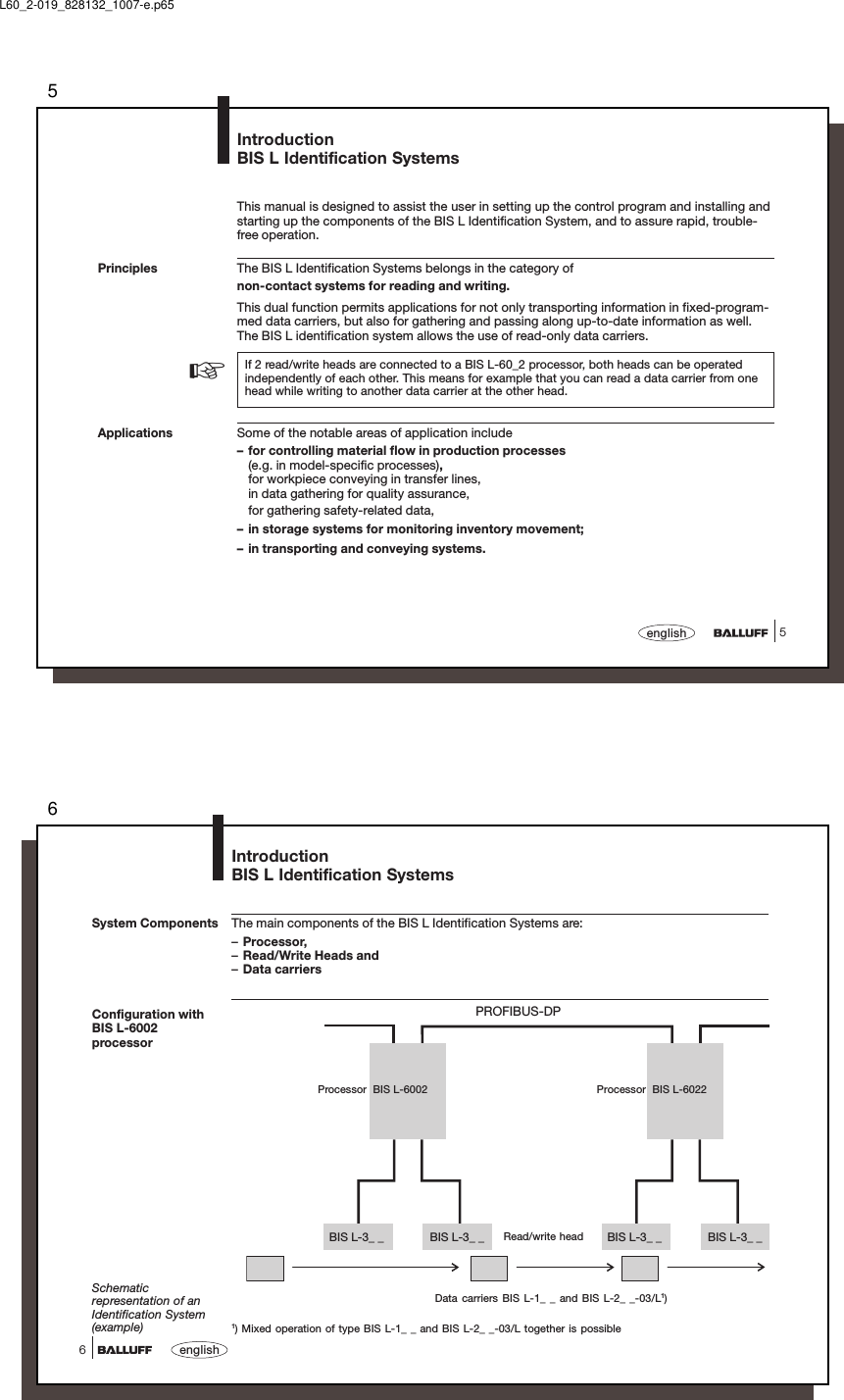
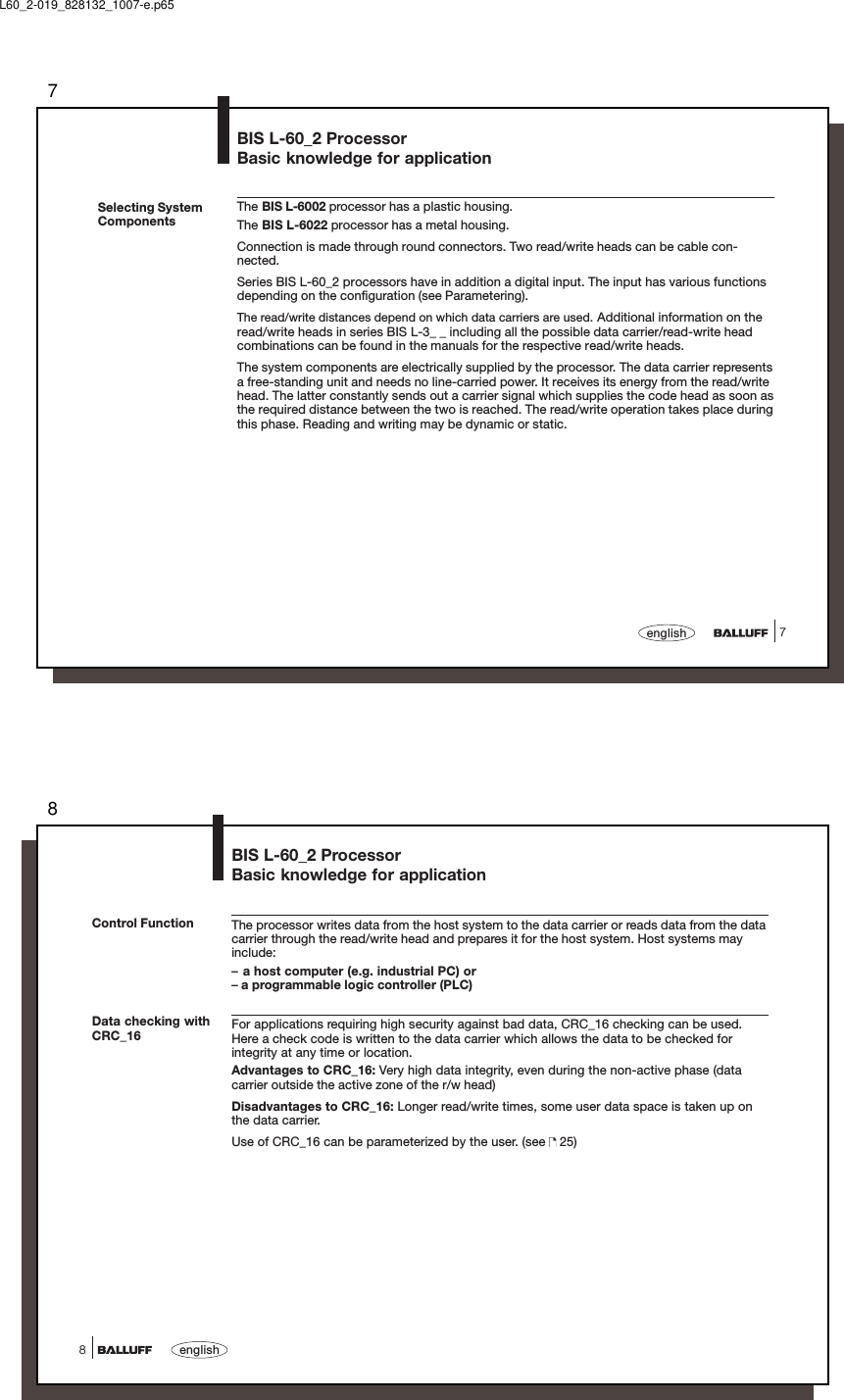
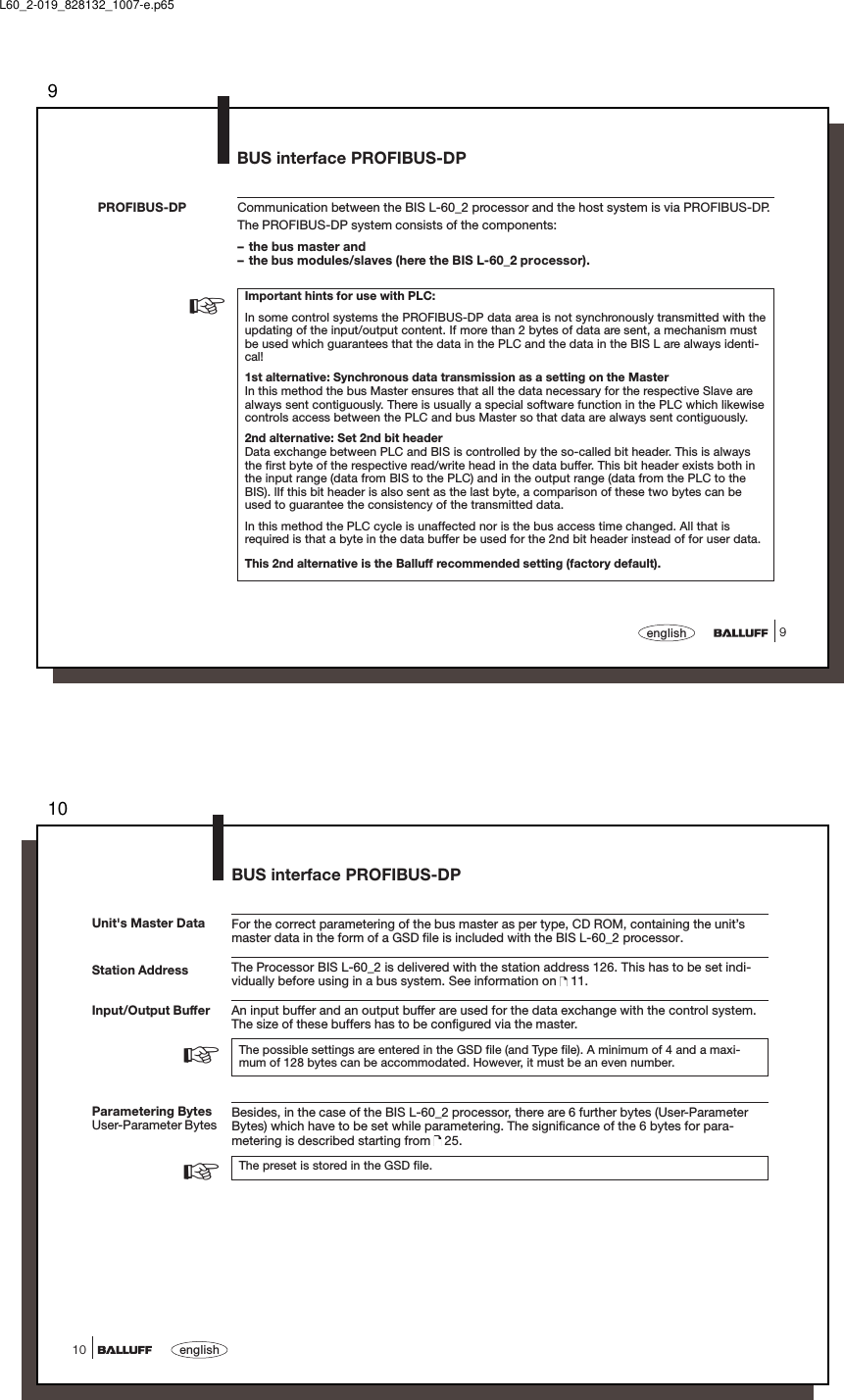
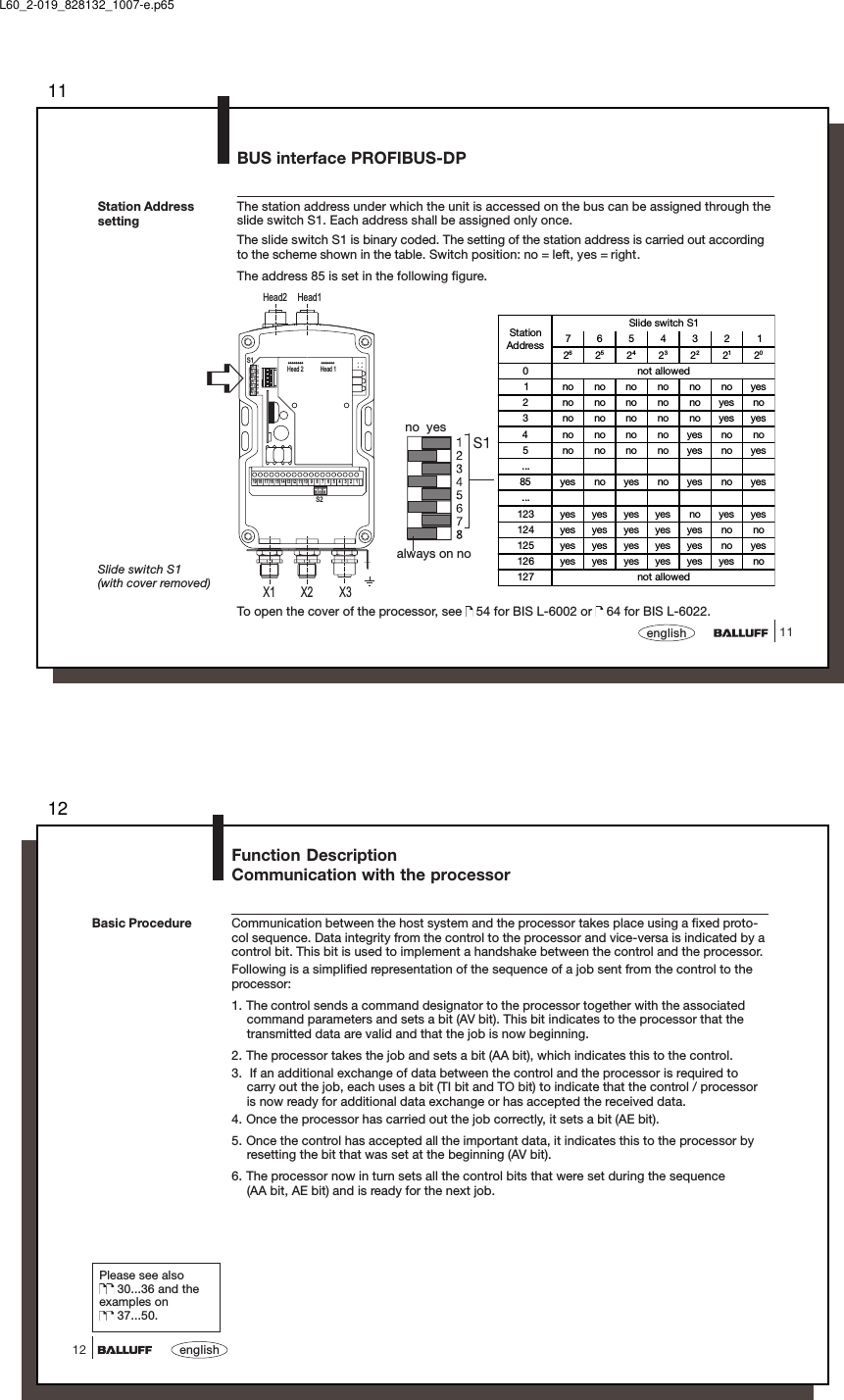
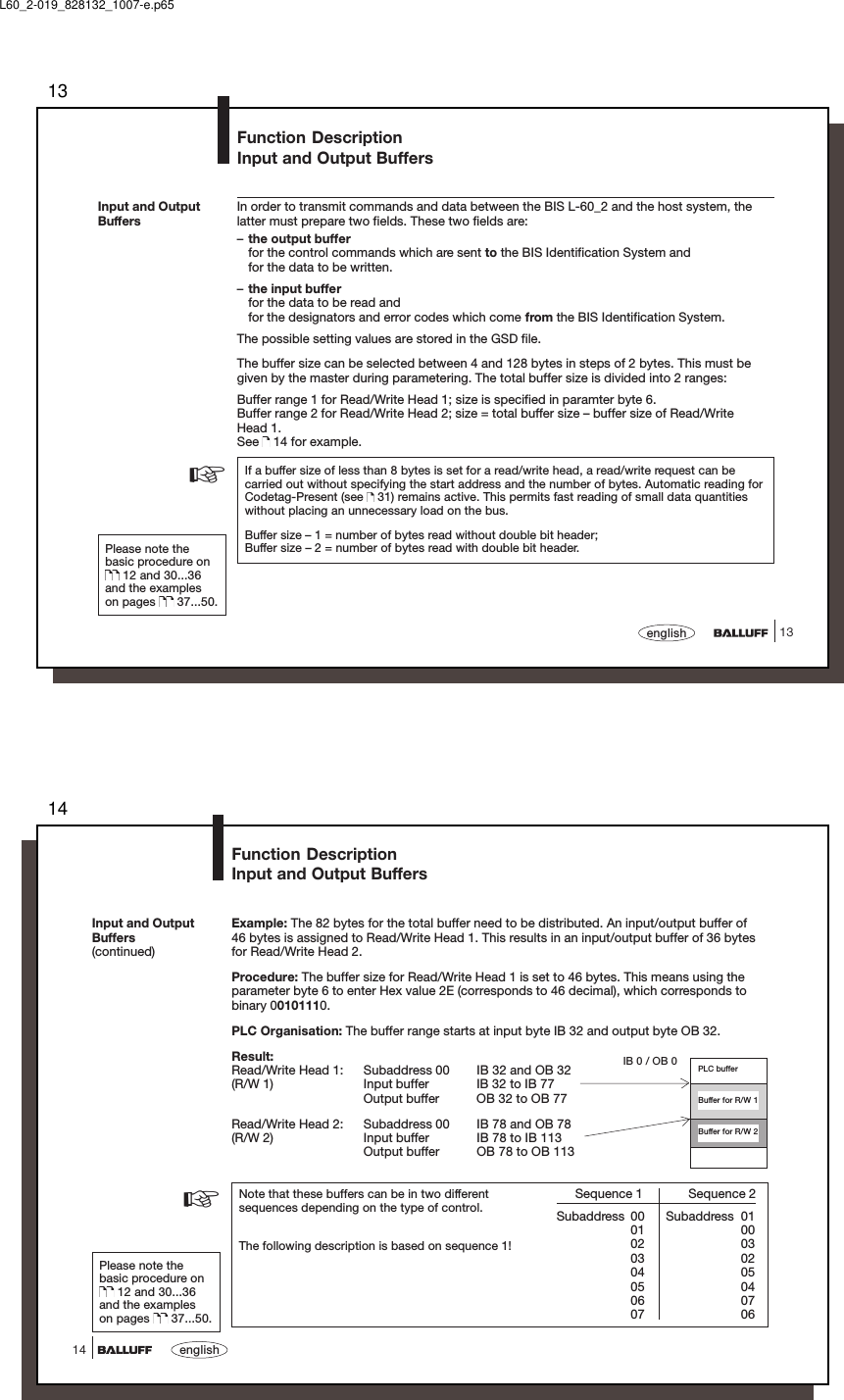
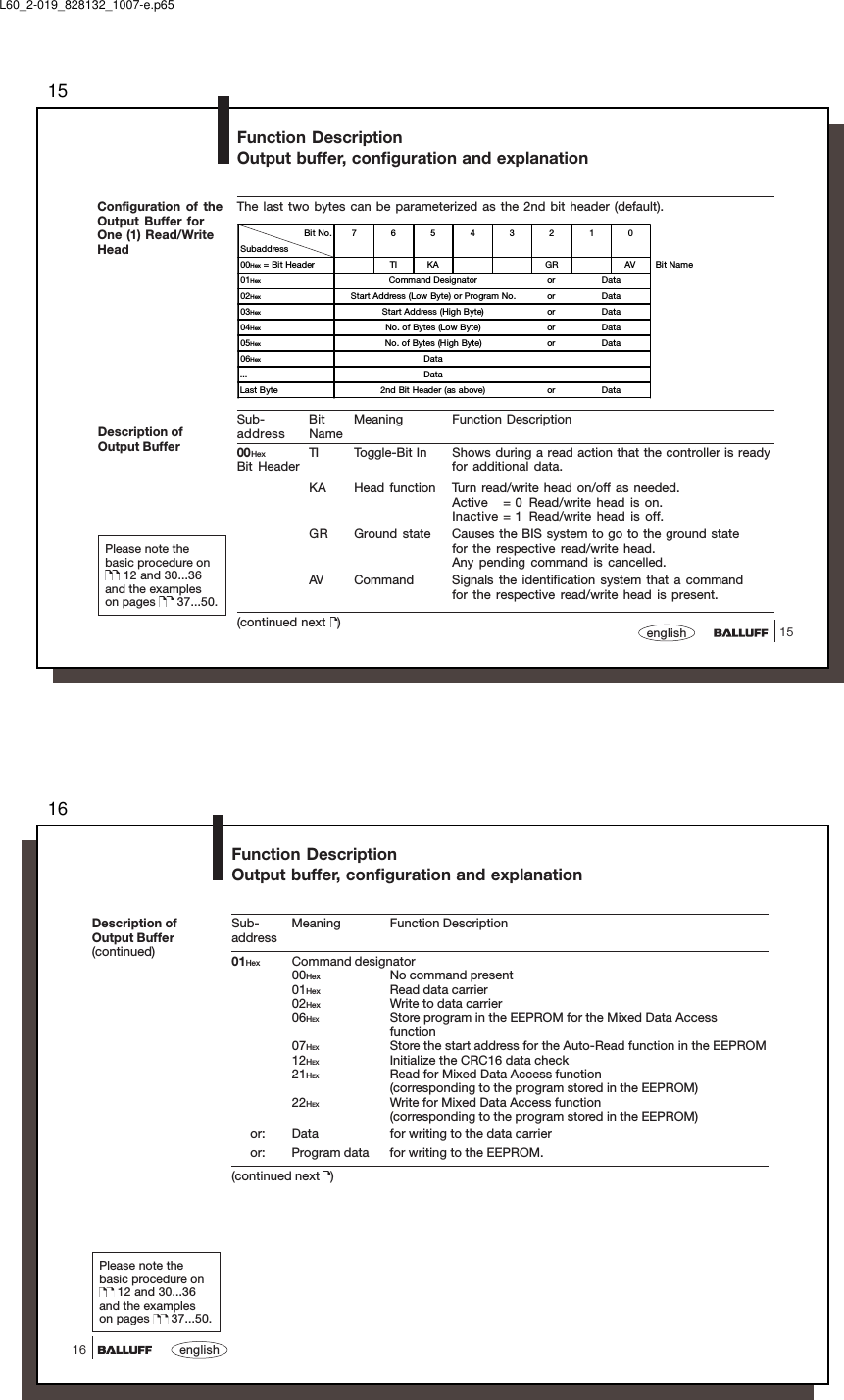
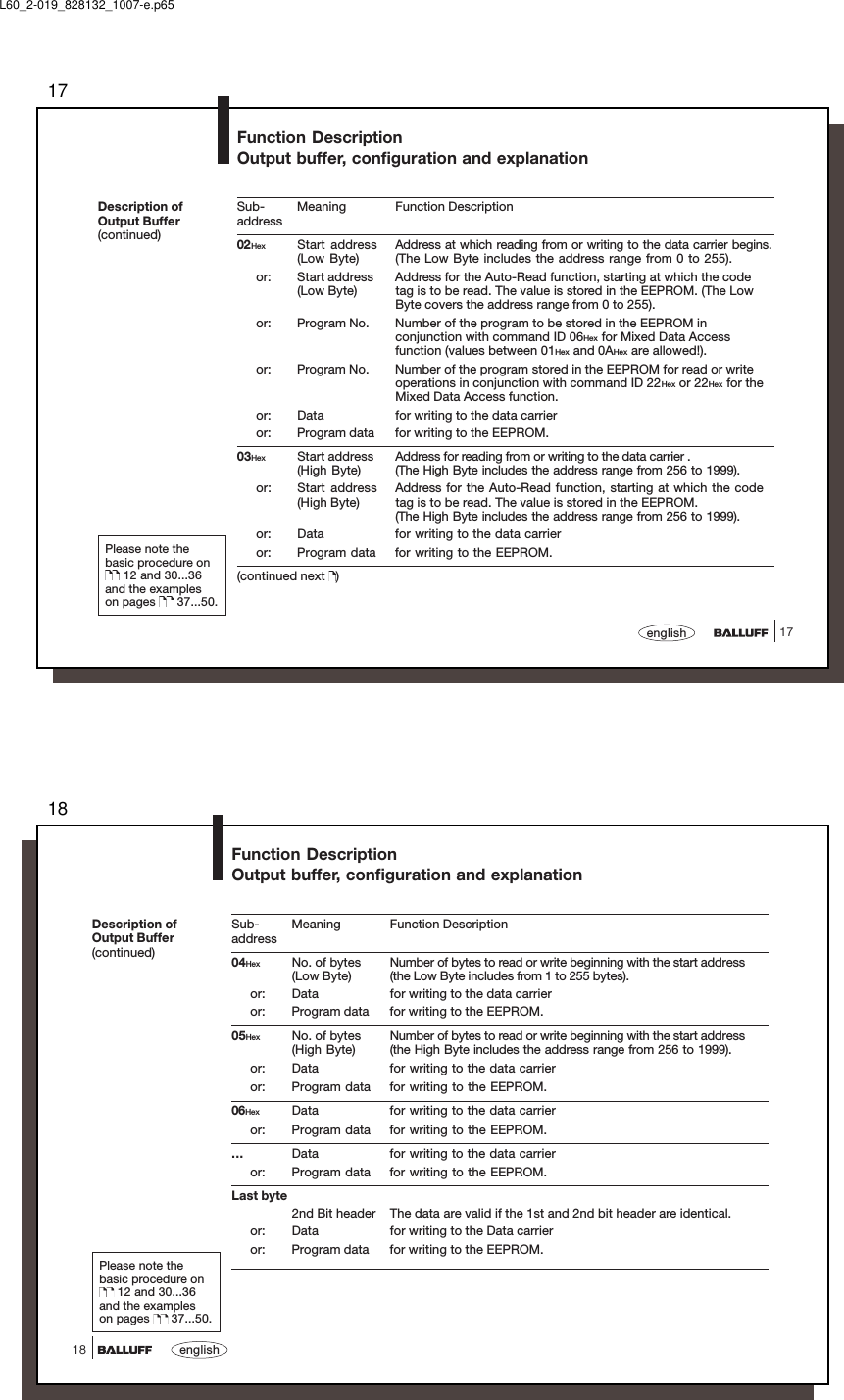
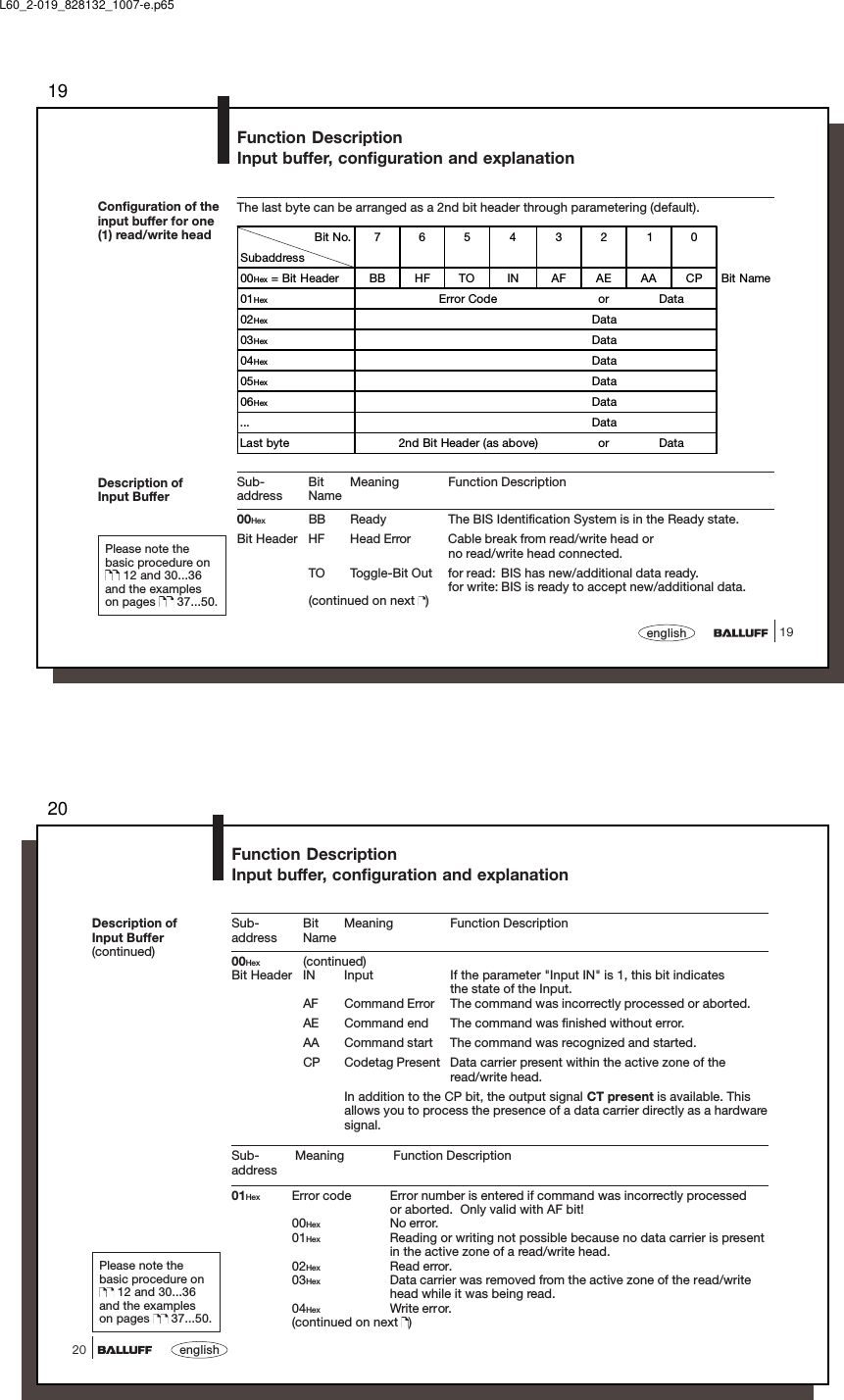
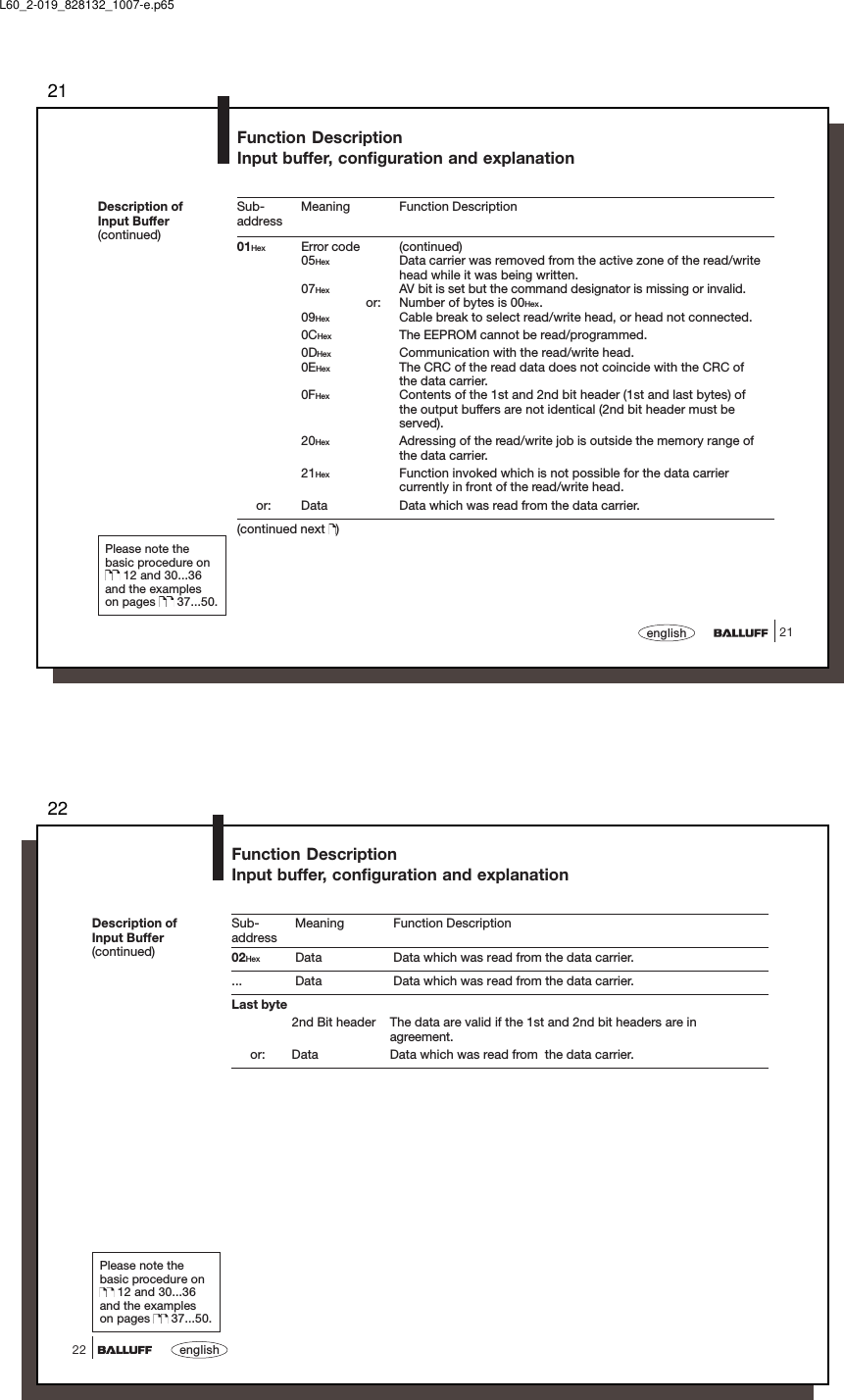
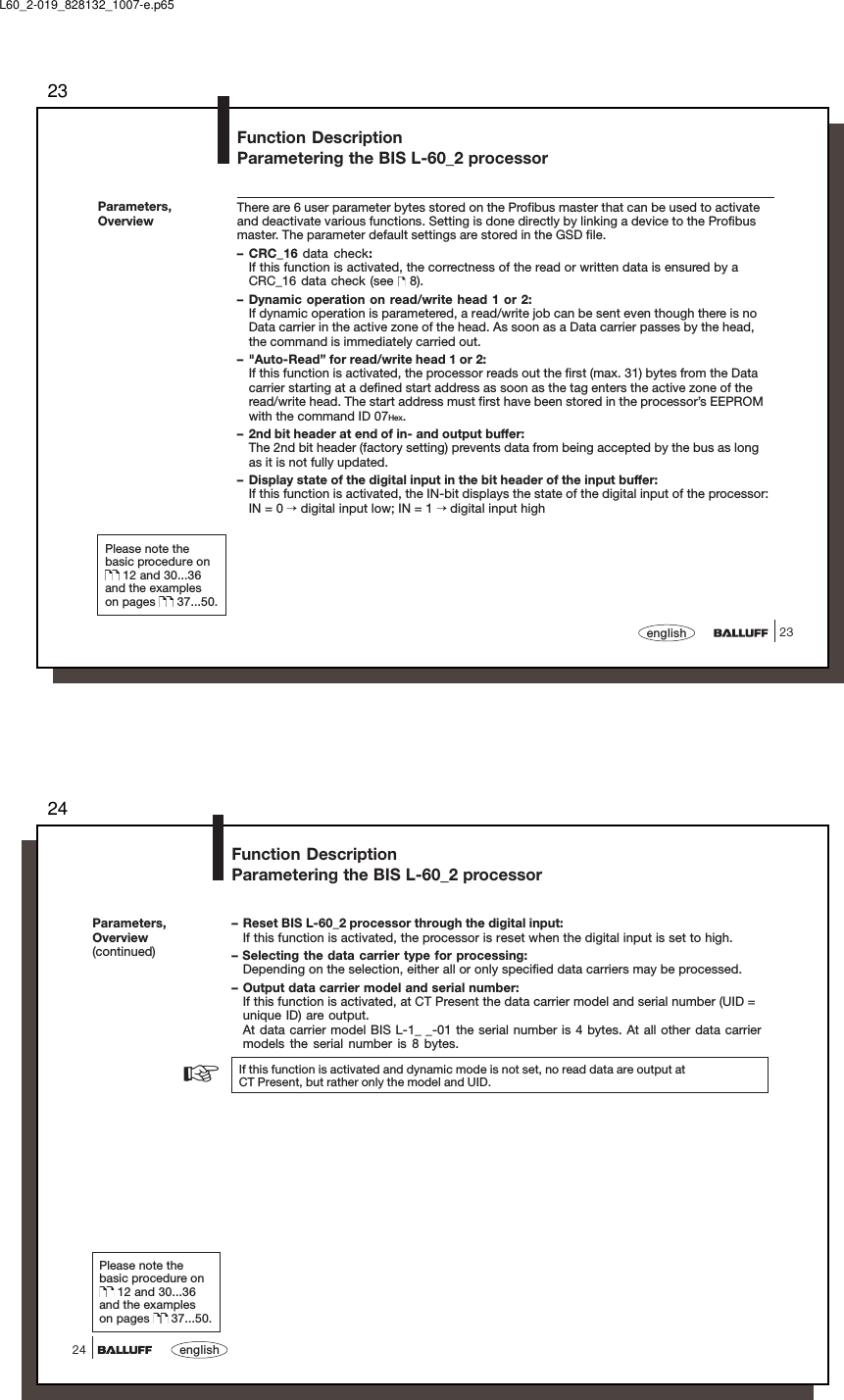
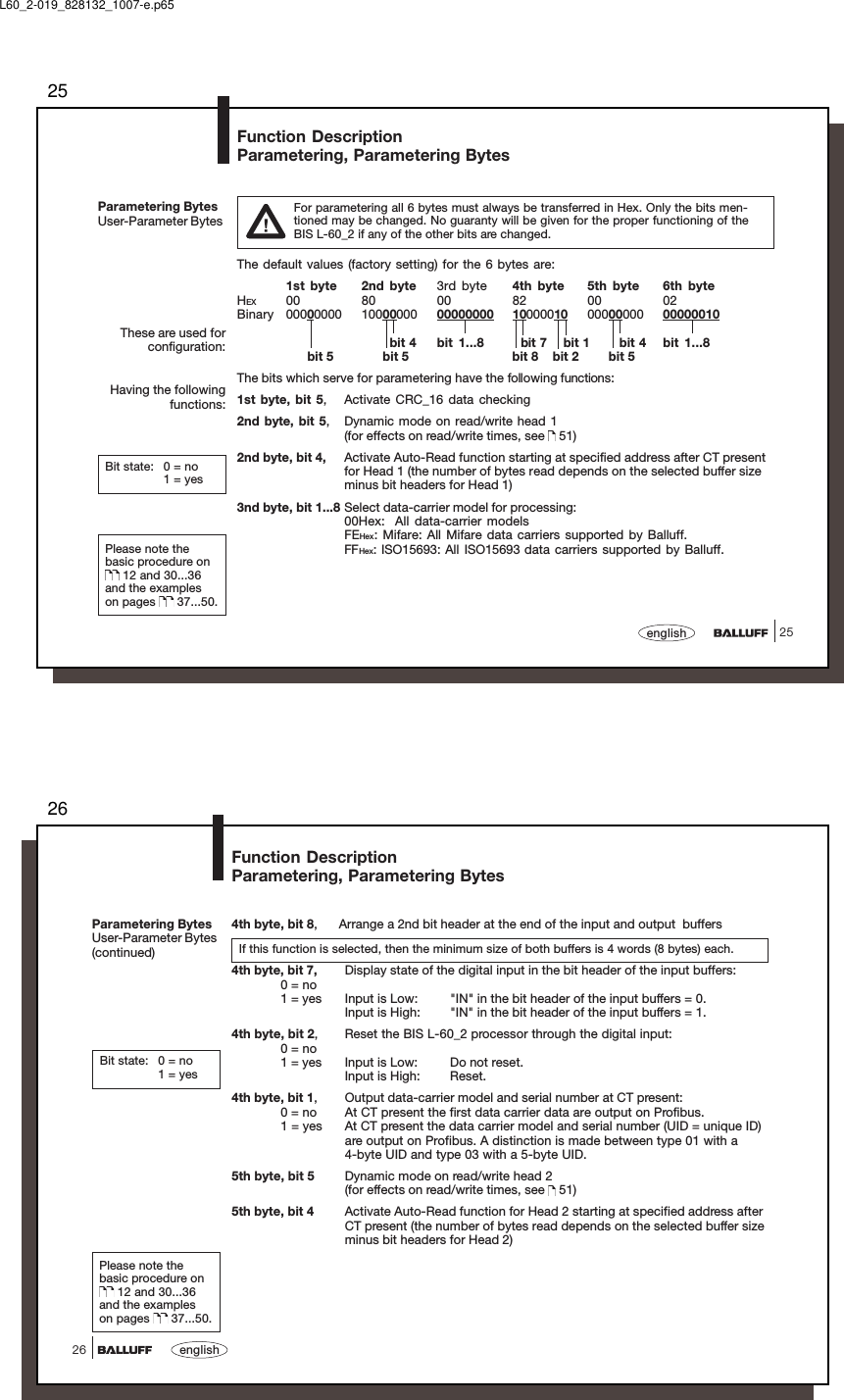
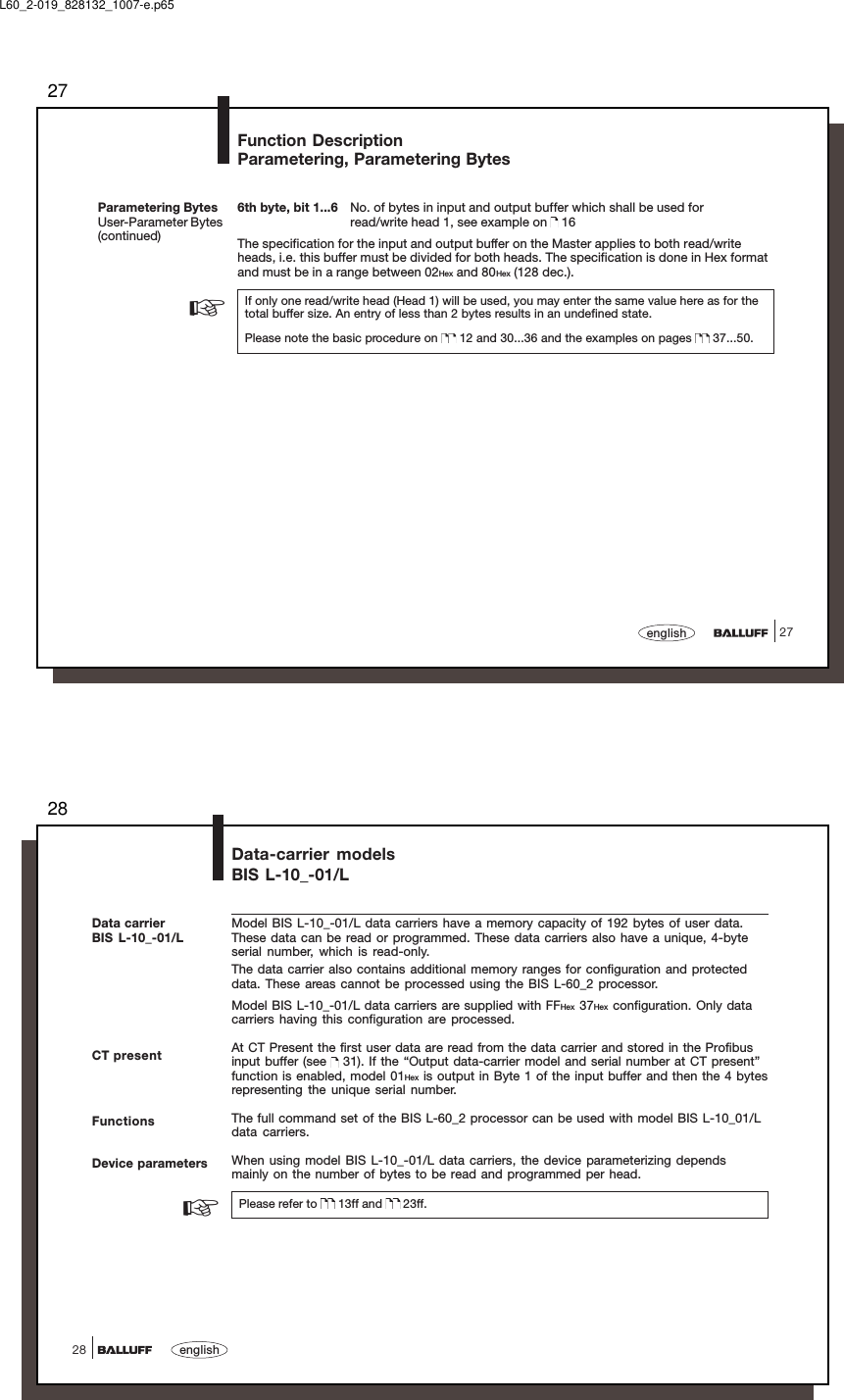
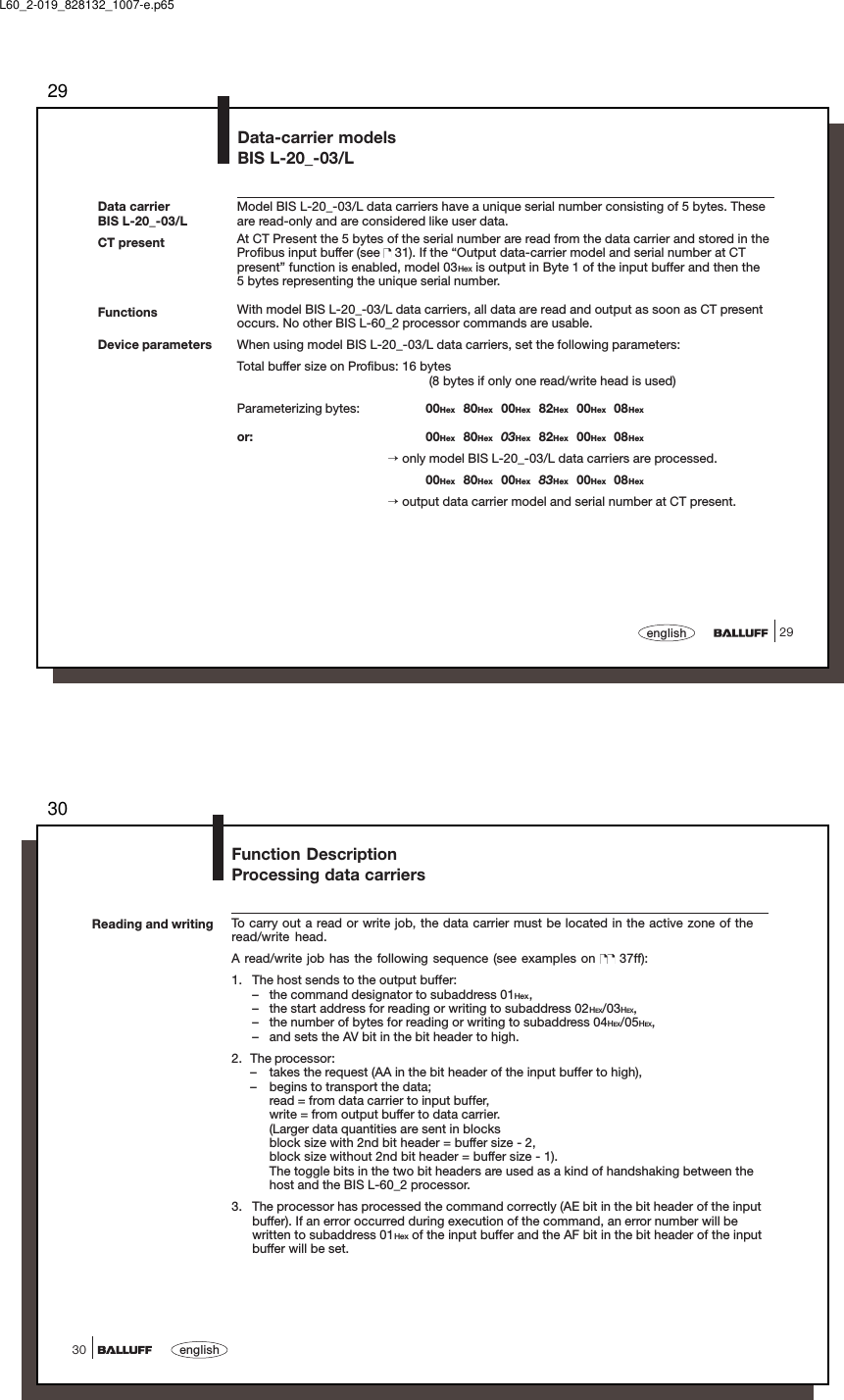
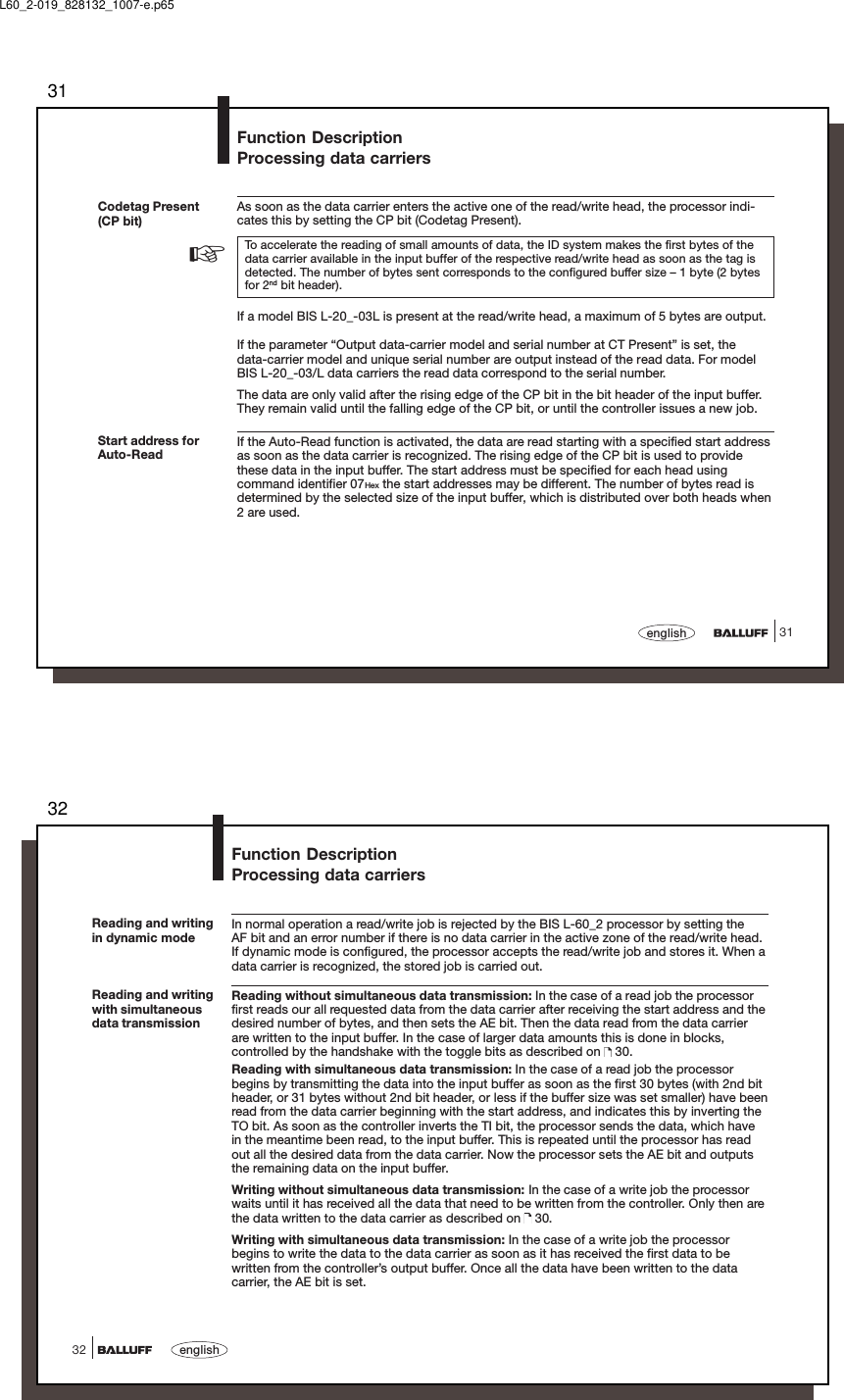
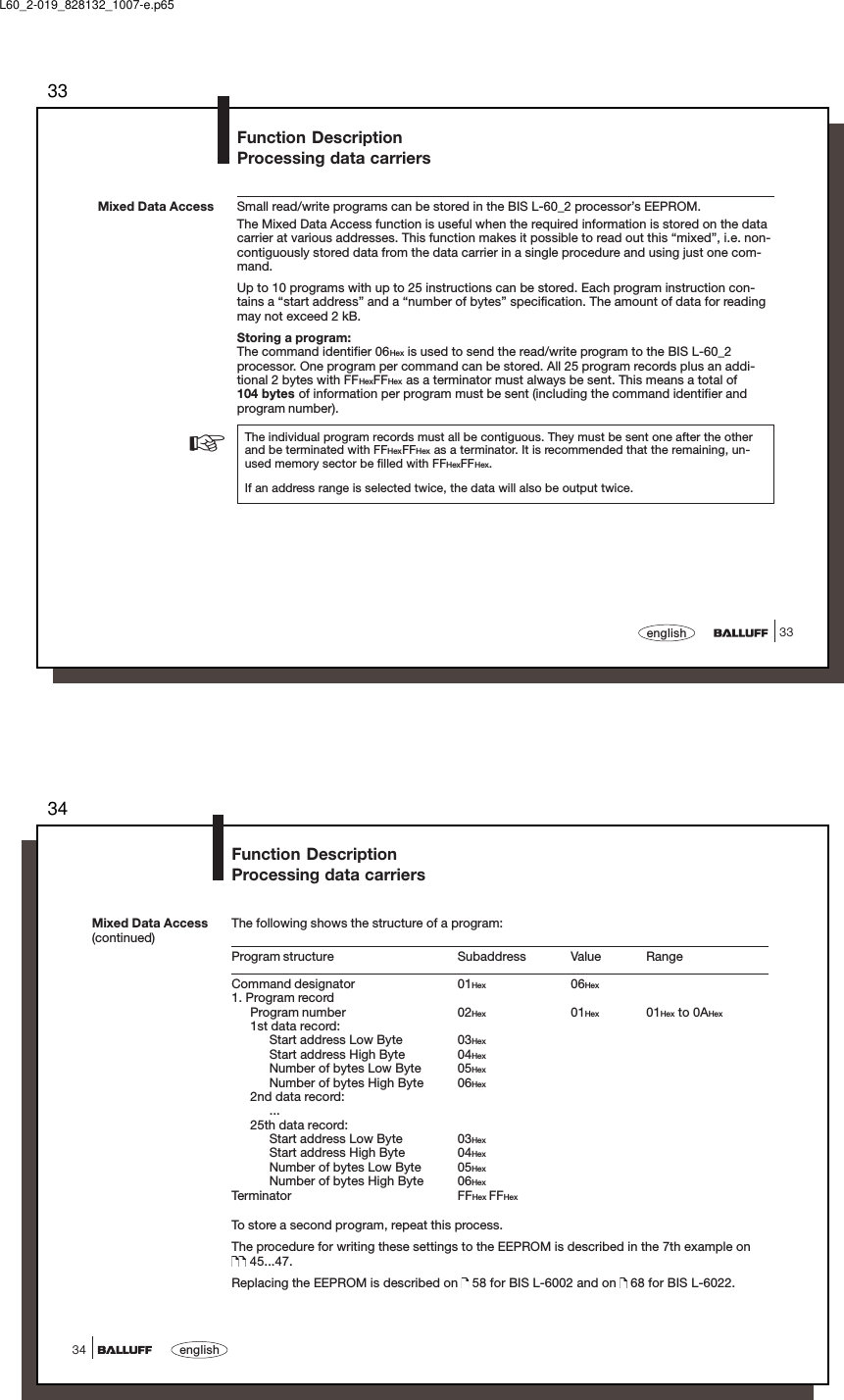
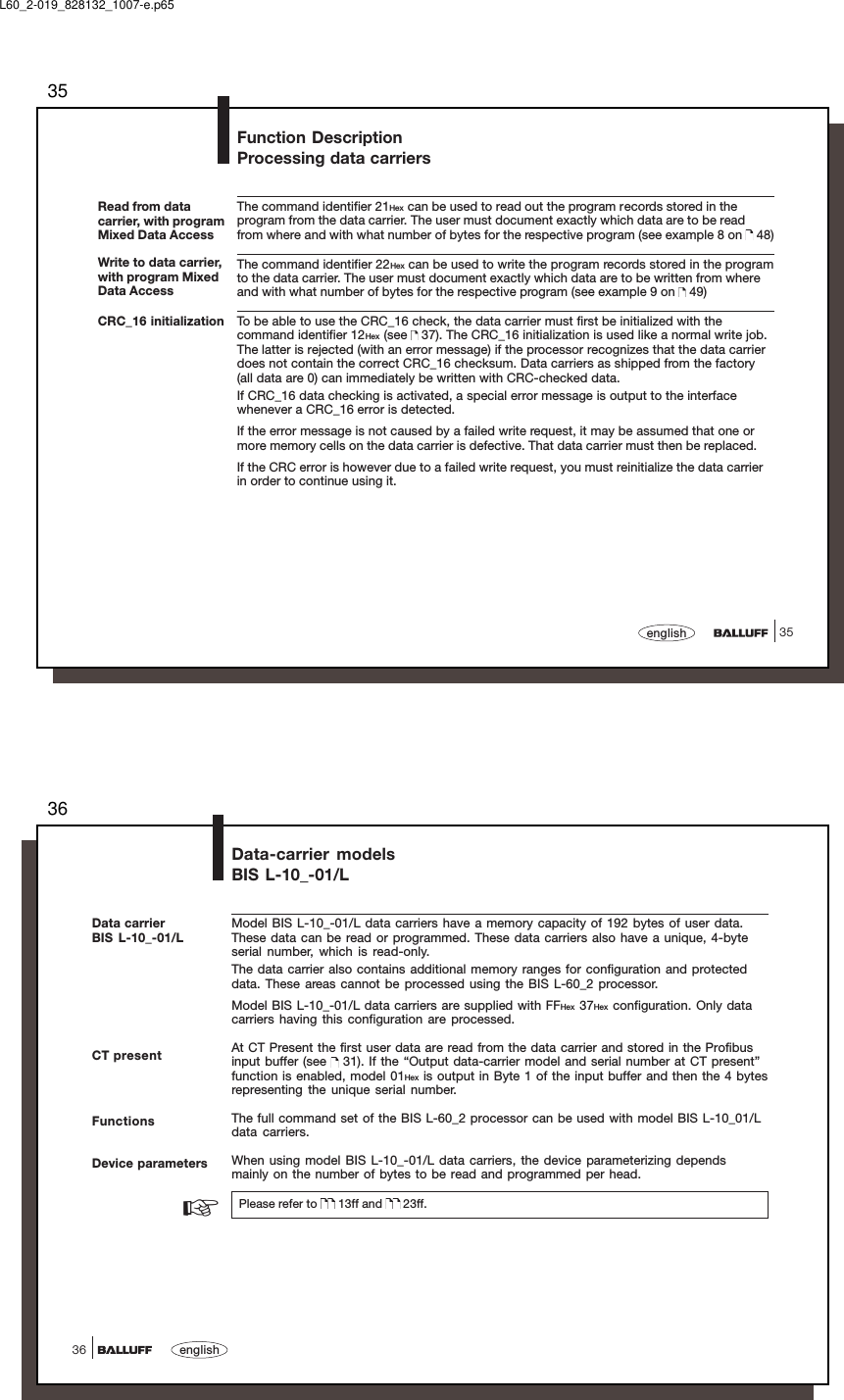
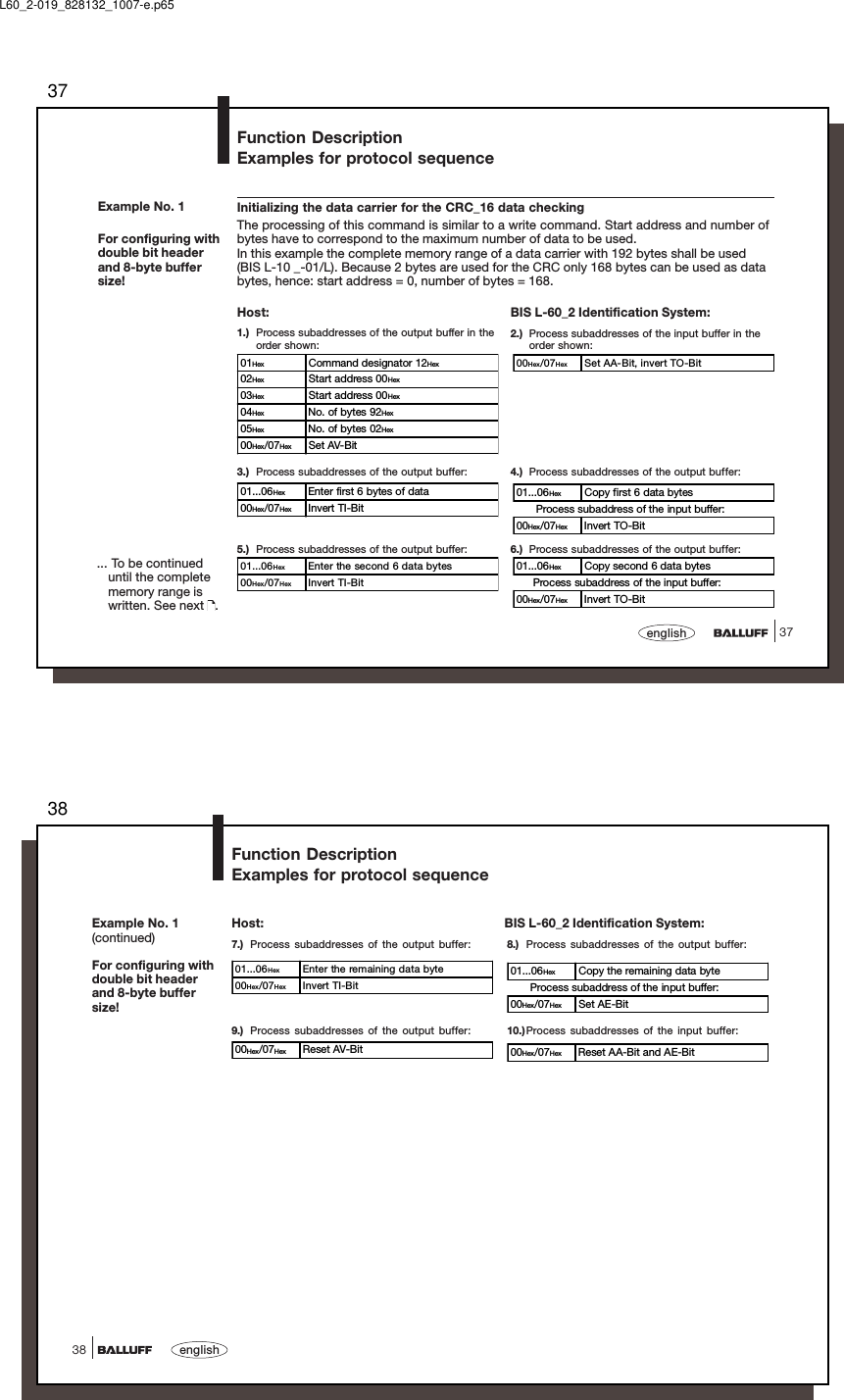
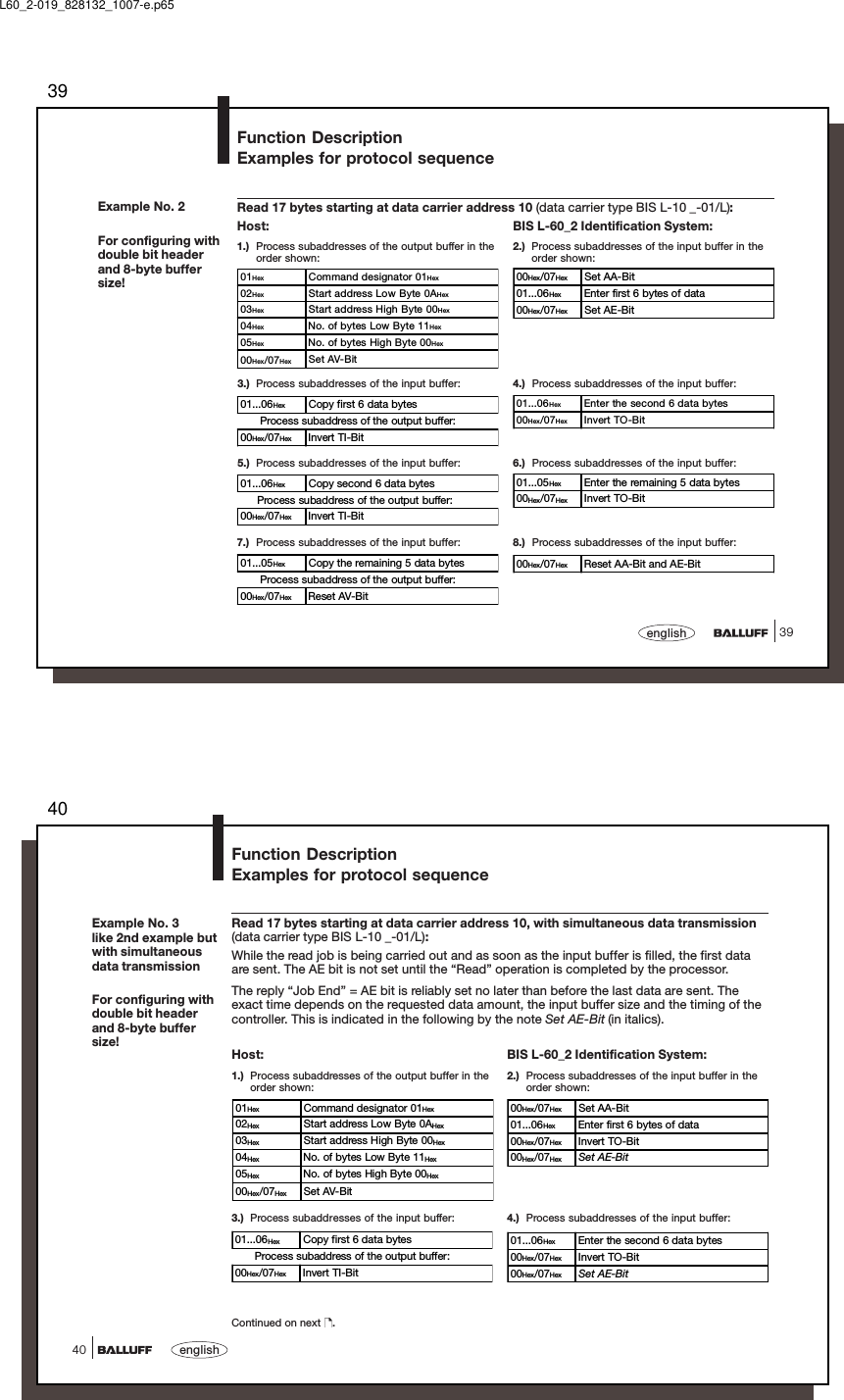
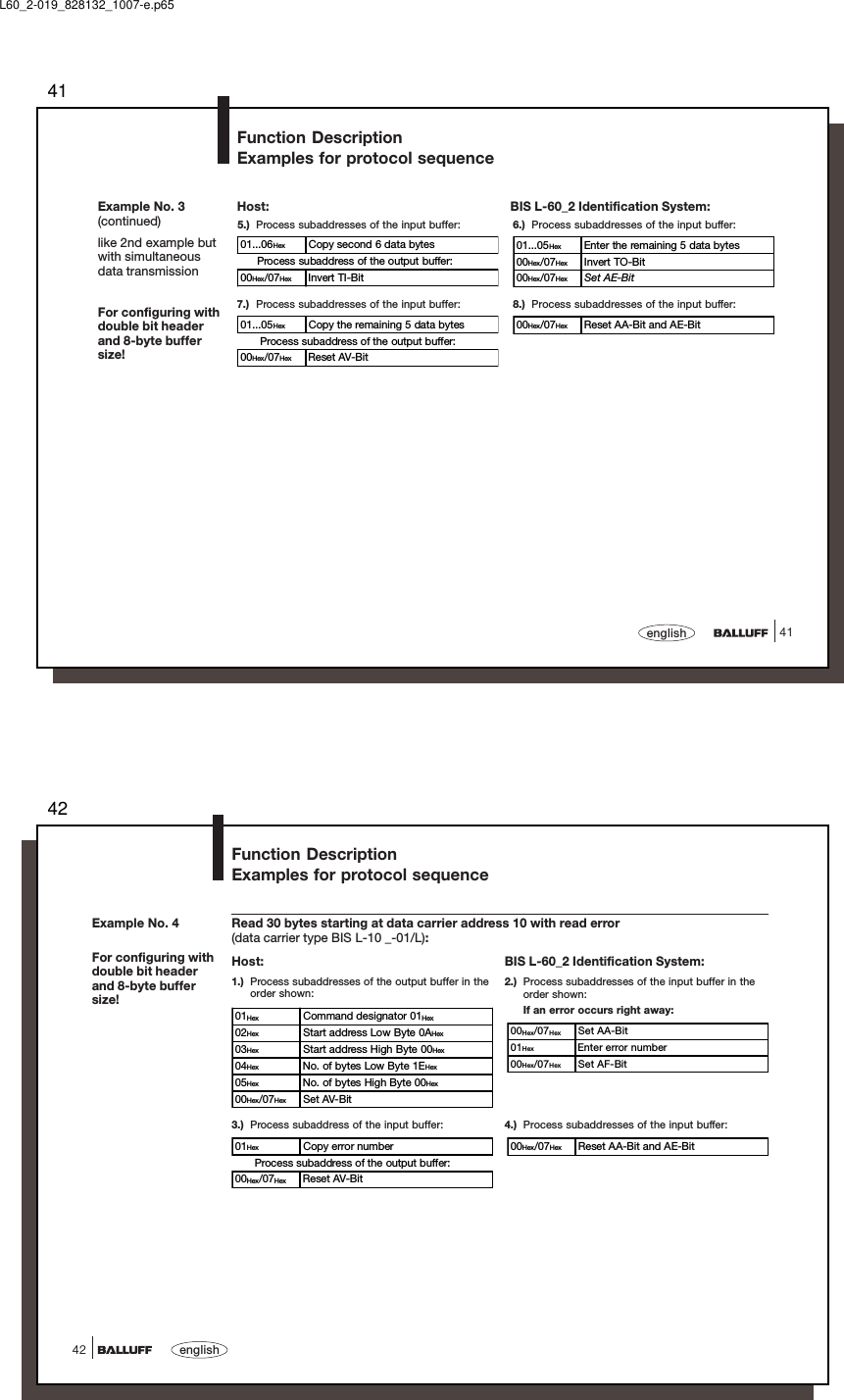
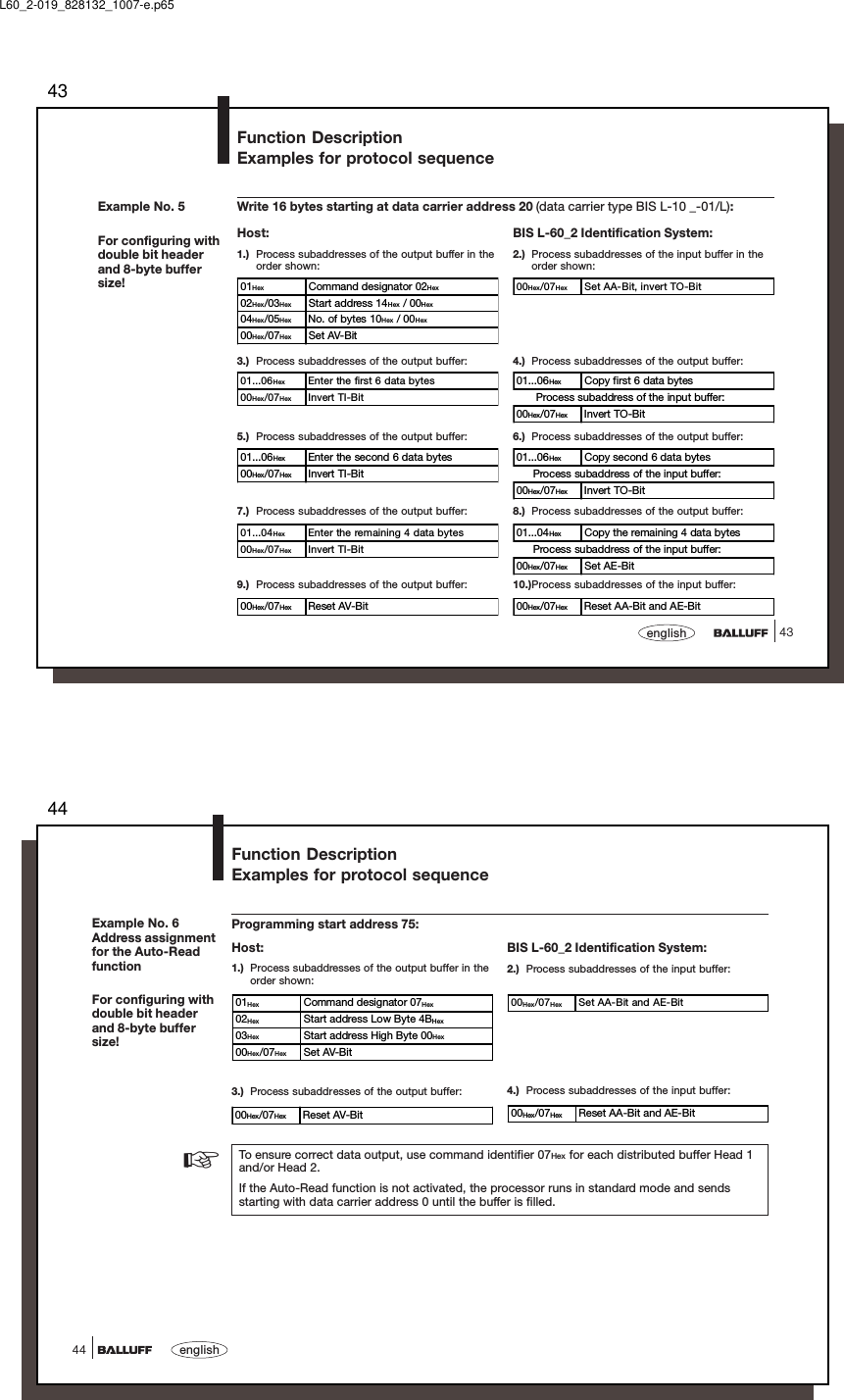
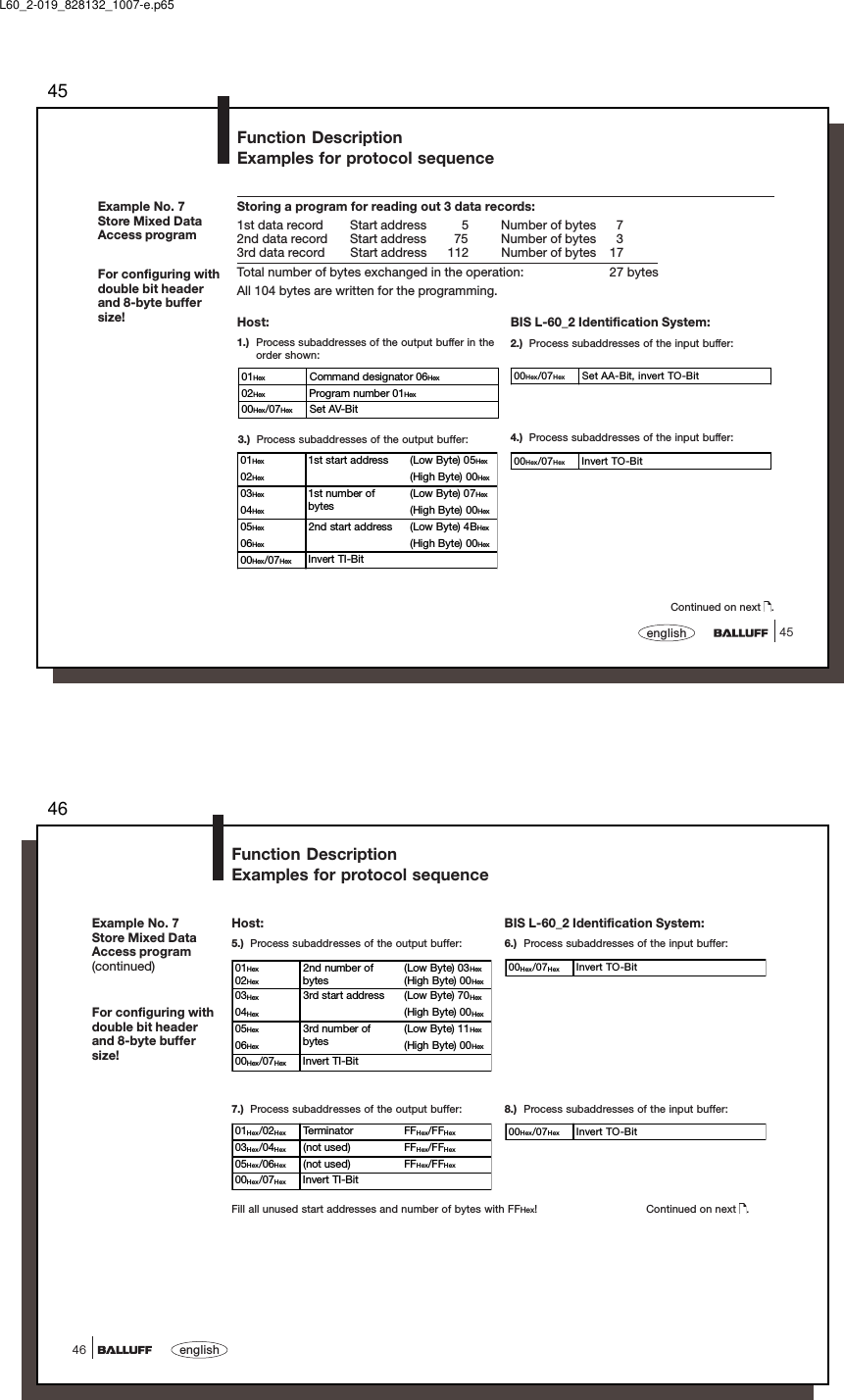
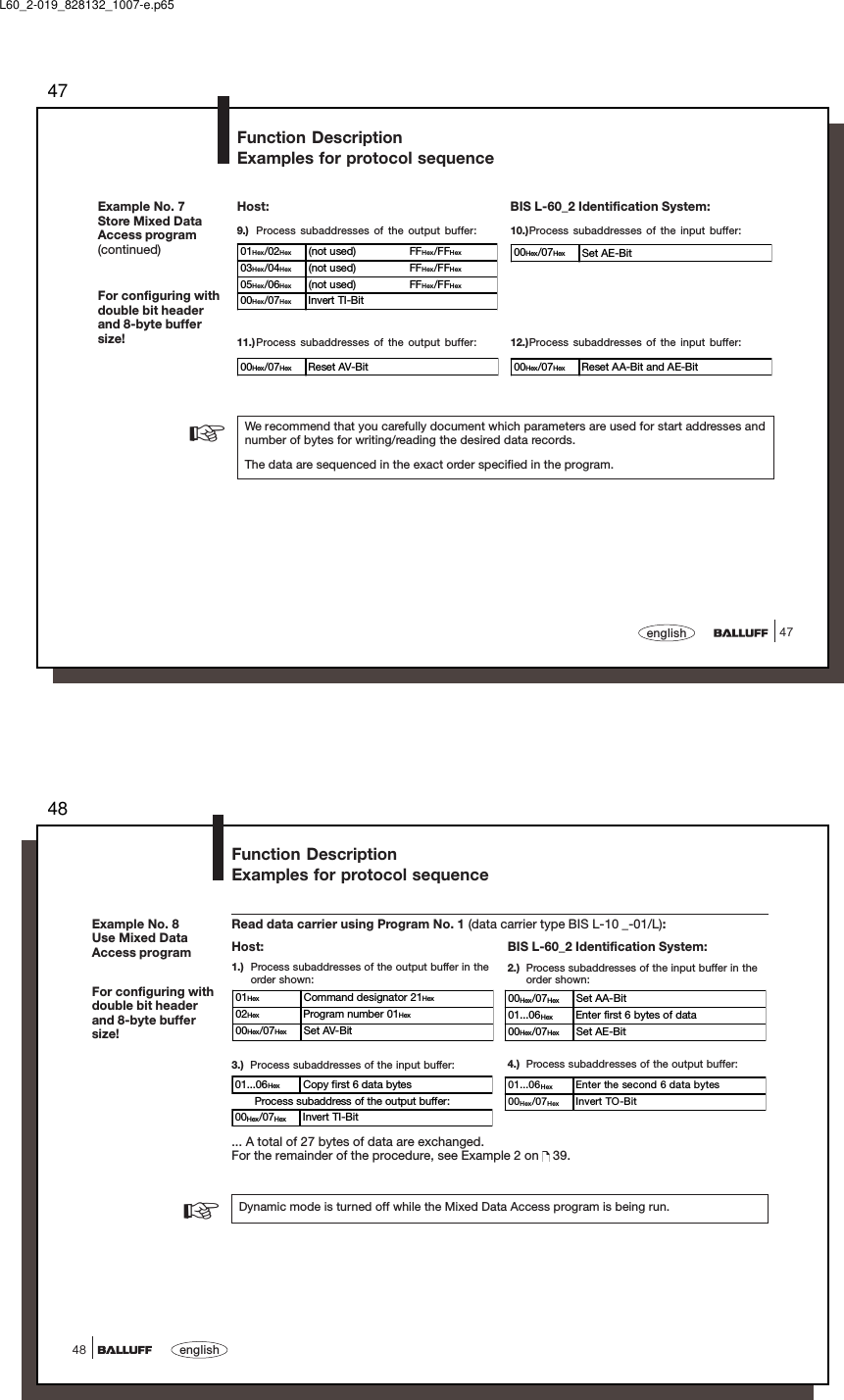
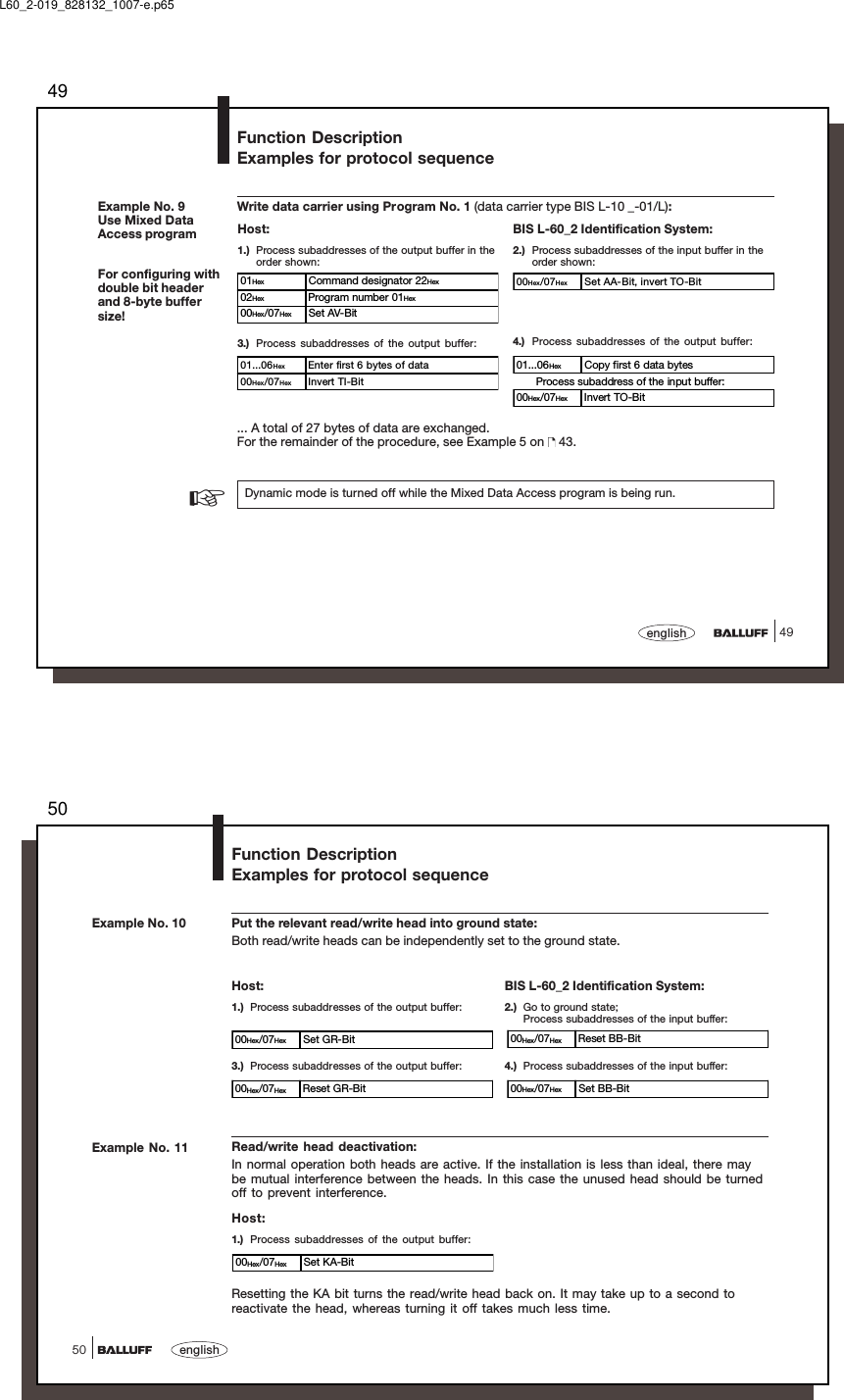
![5151englishRead/Write TimesRead timesAll data are typical values. Deviations are possible depending on the application and combinationof read/write head and data carrier!The data apply to static operation, no CRC_16 data checking.Write times☞Data carrier BIS L-2_ _Recognize data carrier + read data carrier ≈ 270 msData carrier BIS L-2_ _Writing not possibleData carrier with each 16 bytes/block BIS L-1_ _-01 BIS L-1_ _-02Time for data carrier recognition/serial ID < 20 ms < 30 msRead bytes 0 to 15 < 20 ms < 30 msFor each additional 16 bytes add another < 10 ms < 15 msData carrier with each 16 bytes/block BIS L-1_ _-01 BIS L-1_ _-02Time for data carrier recognition/serial ID < 20 ms < 30 msWrite bytes 0 to 15 < 40 ms < 65 msFor each additional 16 bytes add another < 30 ms < 45 msL60_2-019_828132_1007-e.p6552english52Function displayson BIS L-60_2The BIS L-60_2 uses the three side-mounted LED's to indicate important conditions of theidentification system.Status LED MeaningReady / red Supply voltage OK; no hardware error,Bus active however, bus not active.green Supply voltage / hardware OK,bus active.CT1 Present / green Data carrier read/write-ready at read/write head 1.operating yellow Read/write command at read/write head 1 inprocess.yellow flashes Cable break to read/write head or not connected.[f ≈ 2 Hz]yellow flashes faster Communication with R/W Head 1 is faulty[f ≈ 4 Hz] or R/W Head 1 is defective.off No data carrier in read/write range ofread/write head 1.CT2 Present / green Data carrier read/write-ready at read/write head 2.operating yellow Read/write command at read/write head 2 inprocess.yellow flashes Cable break to read/write head or not connected.[f ≈ 2 Hz]yellow flashes faster Communication with R/W Head 2 is faulty[f ≈ 4 Hz] or R/W Head 2 is defective.off No data carrier in read/write range ofread/write head 2.If all three LED's are synchronously flashing, it means a hardware error. Return the unit to the factory.LED Display](https://usermanual.wiki/Balluff/BISL303.User-Manual-1-of-2-pdf/User-Guide-2370932-Page-26.png)
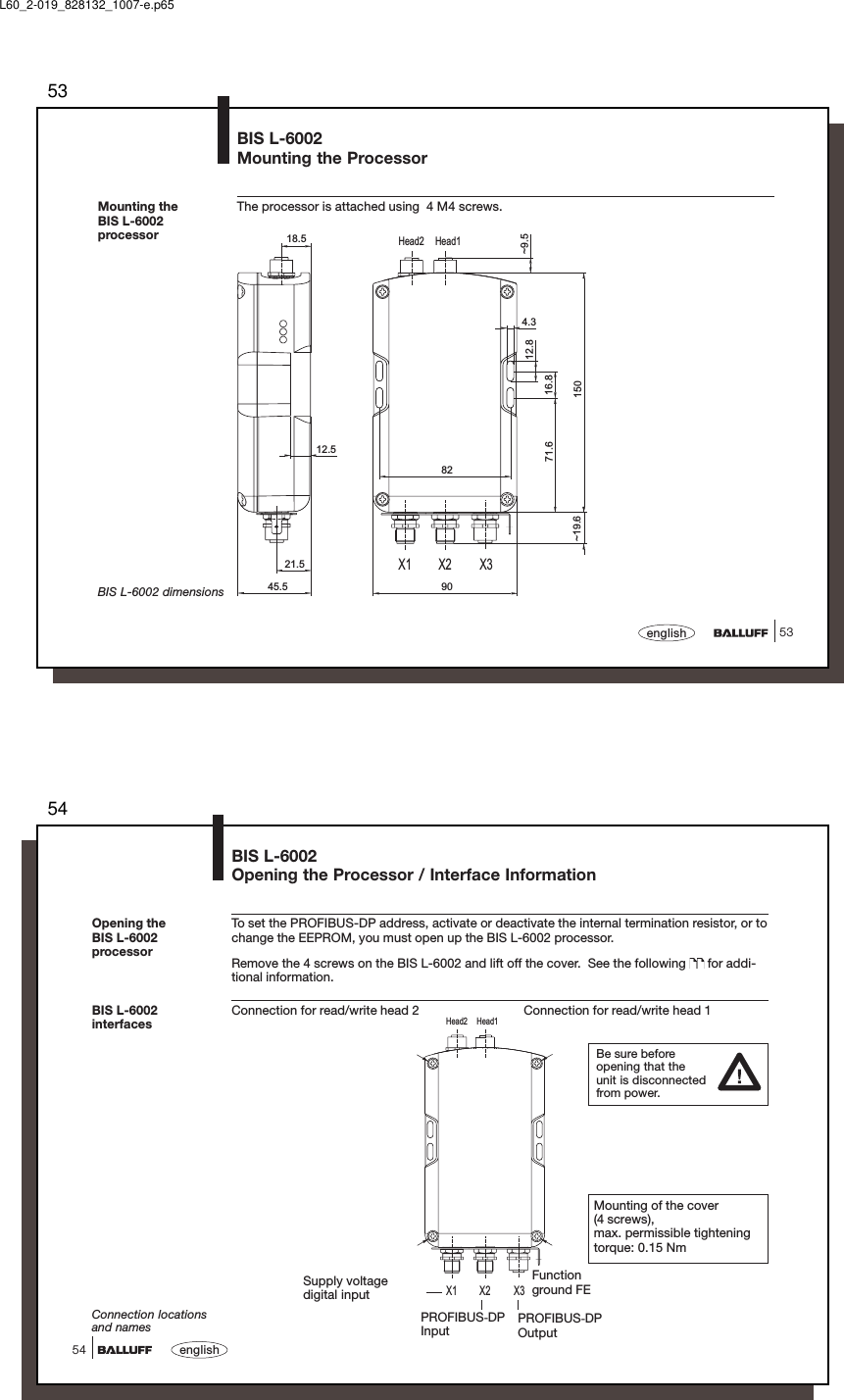
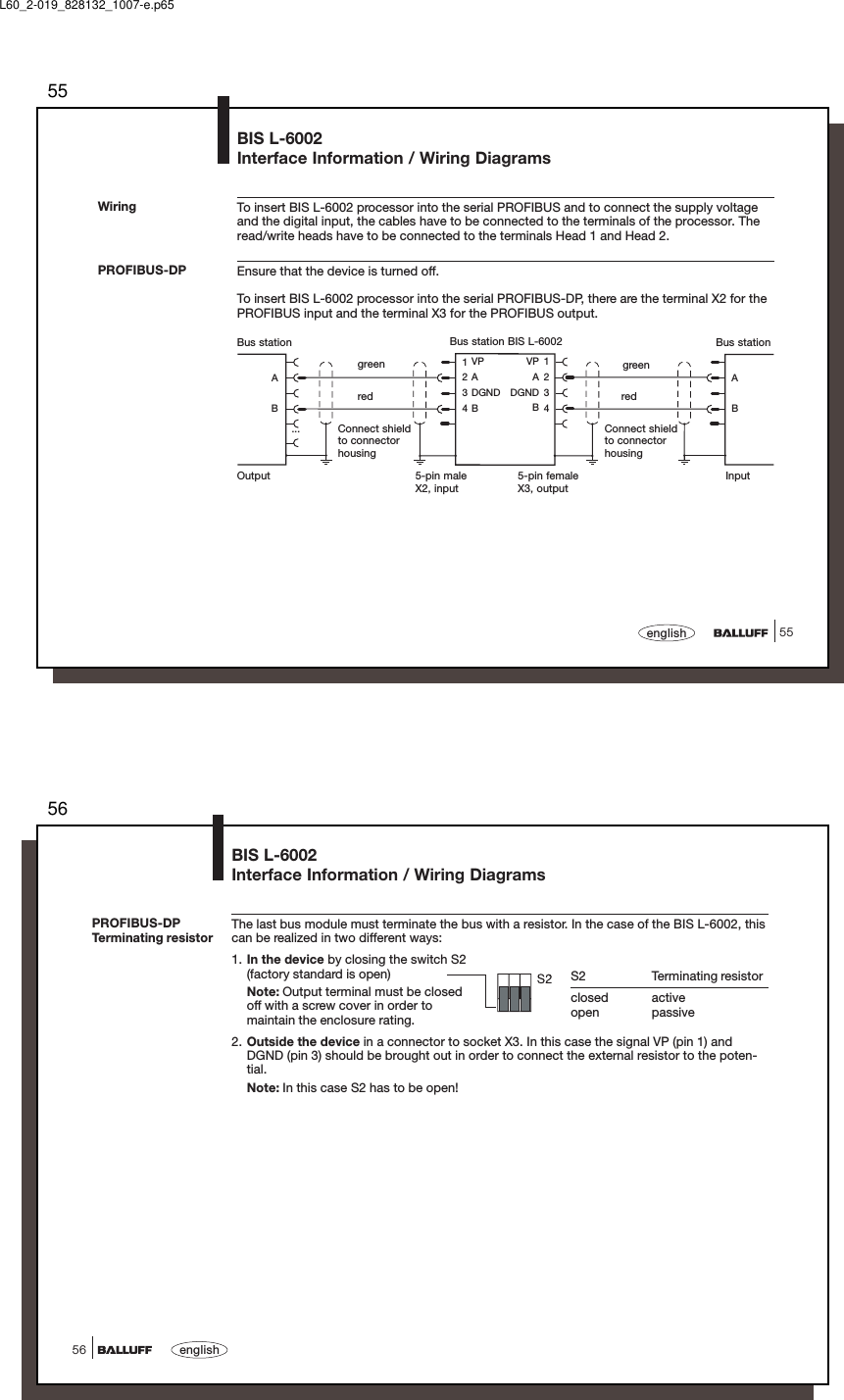
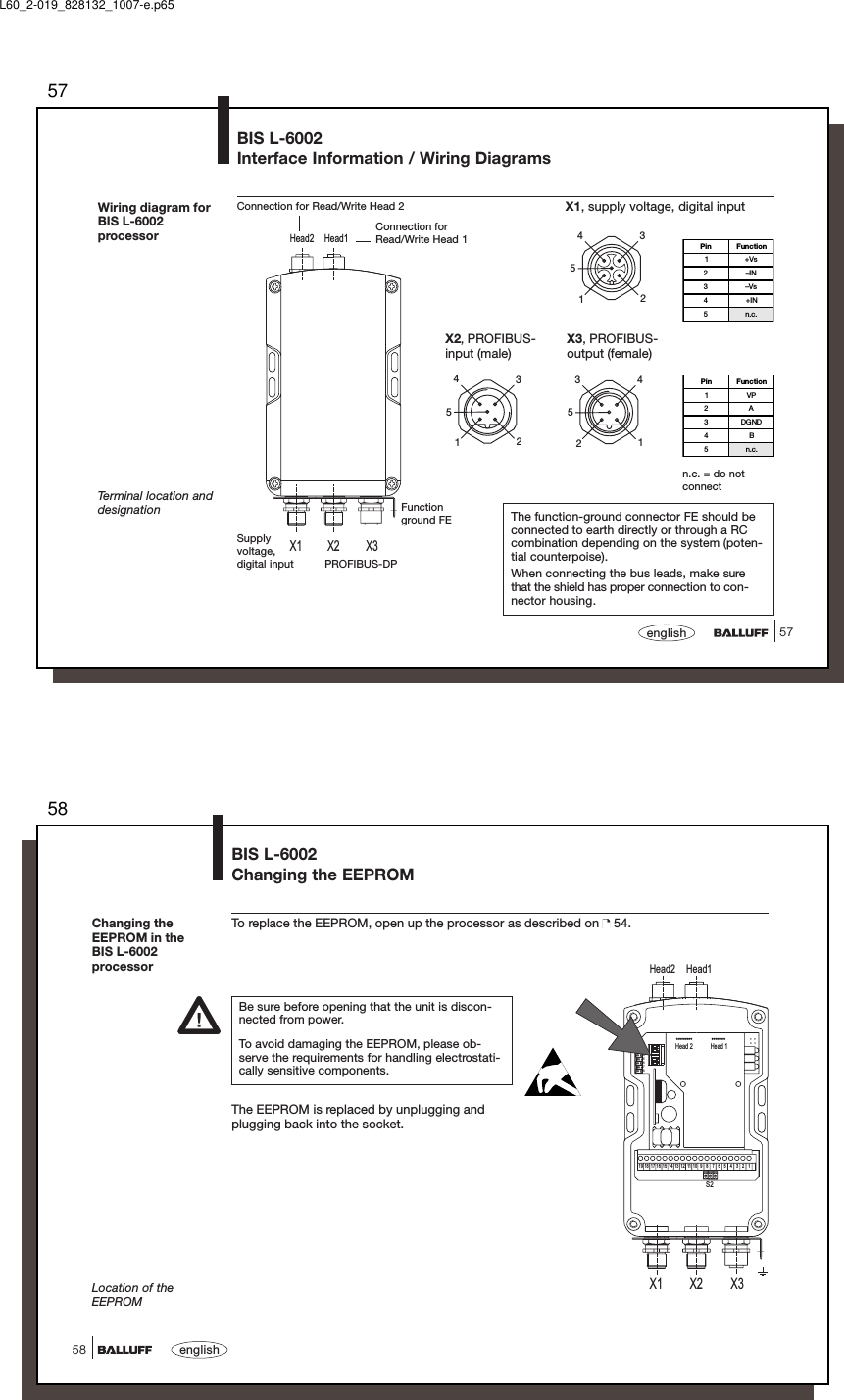
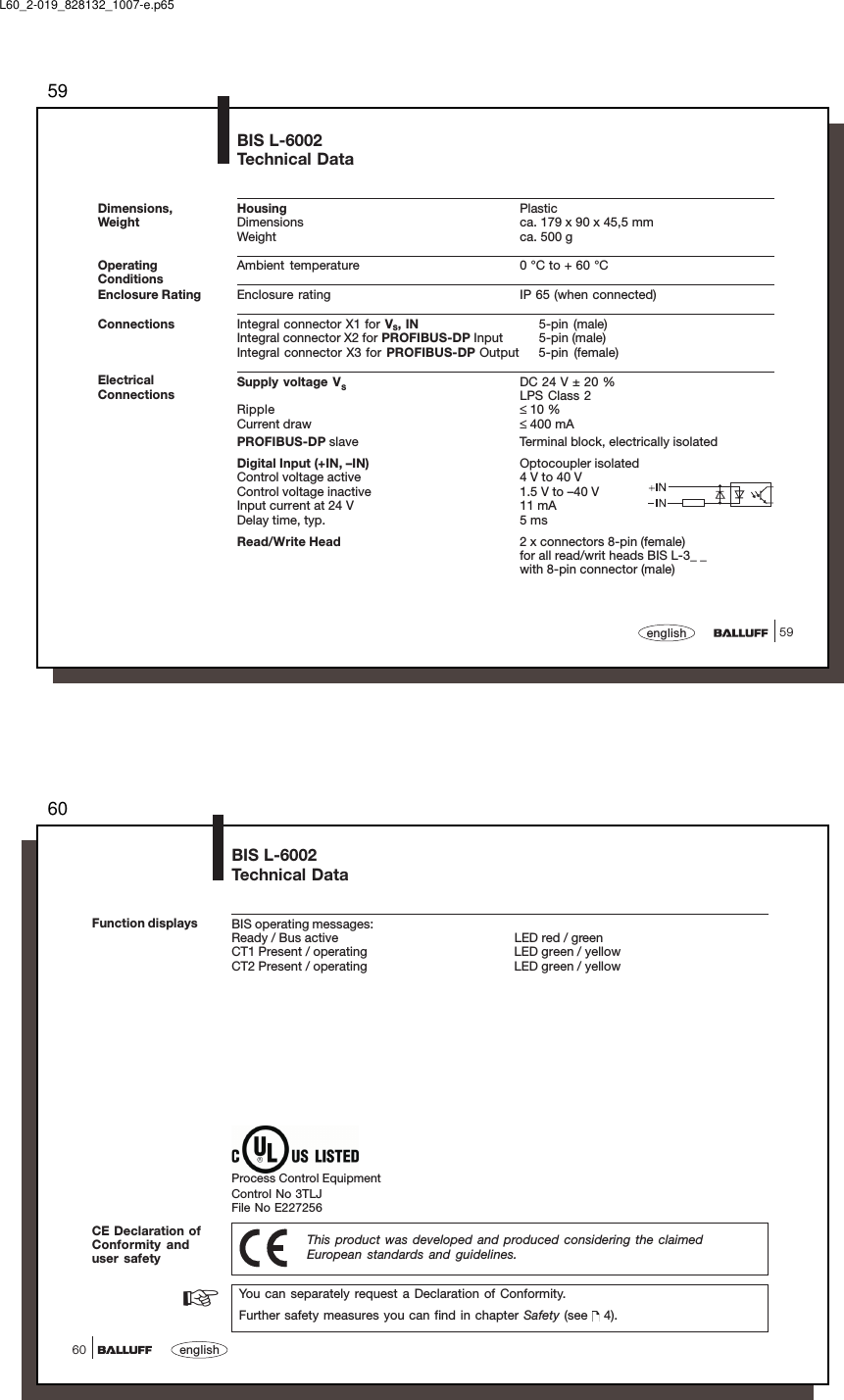
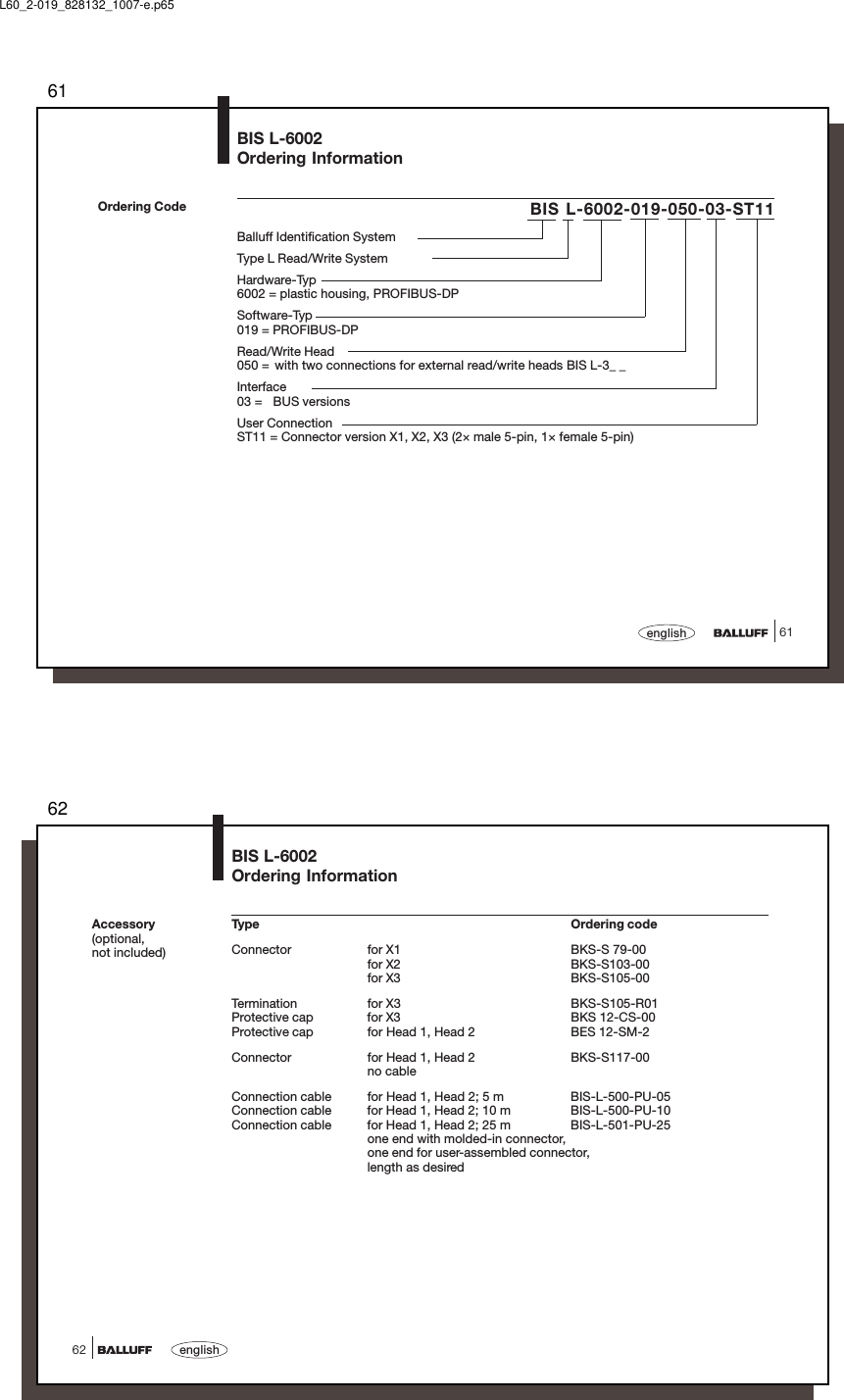
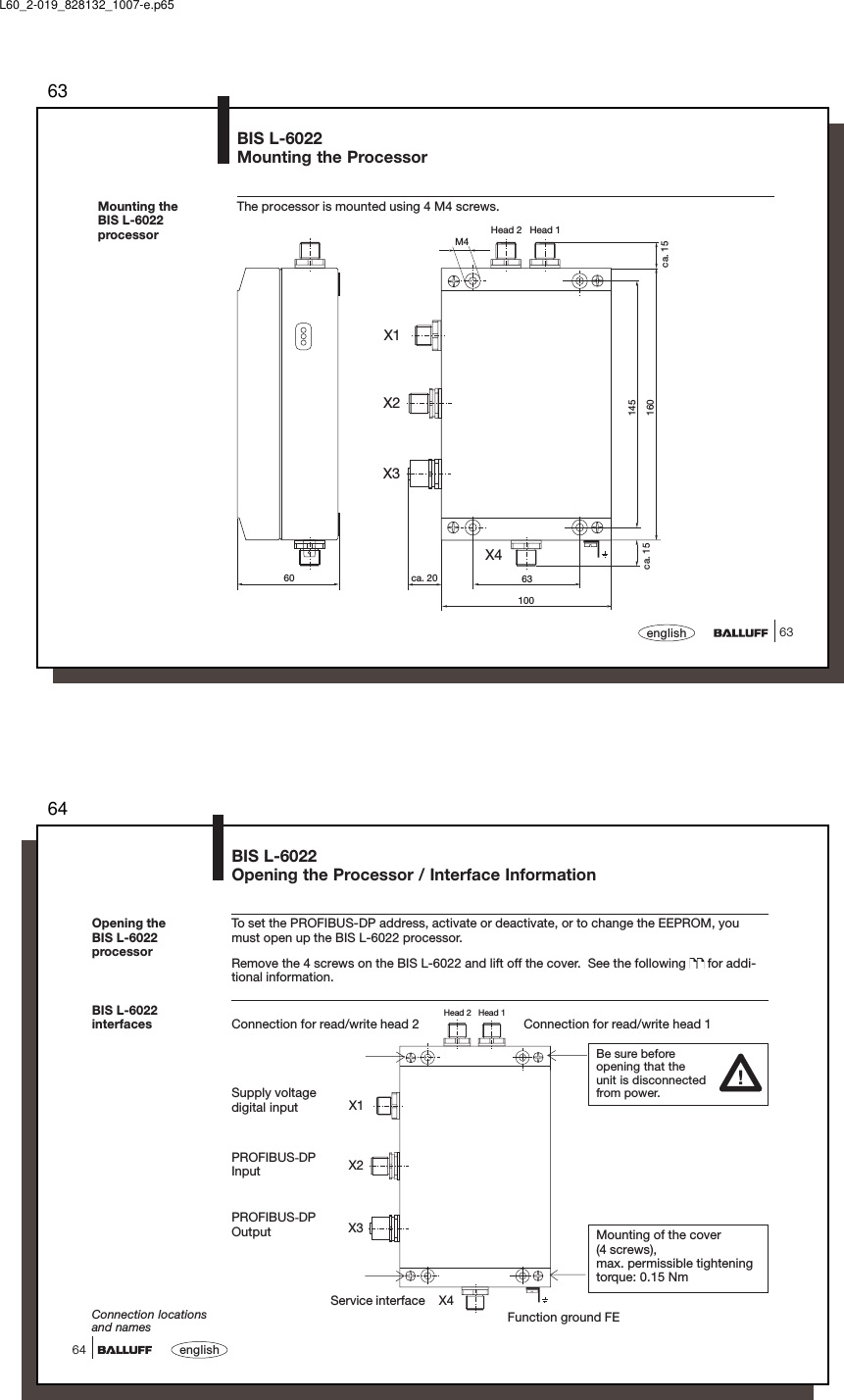
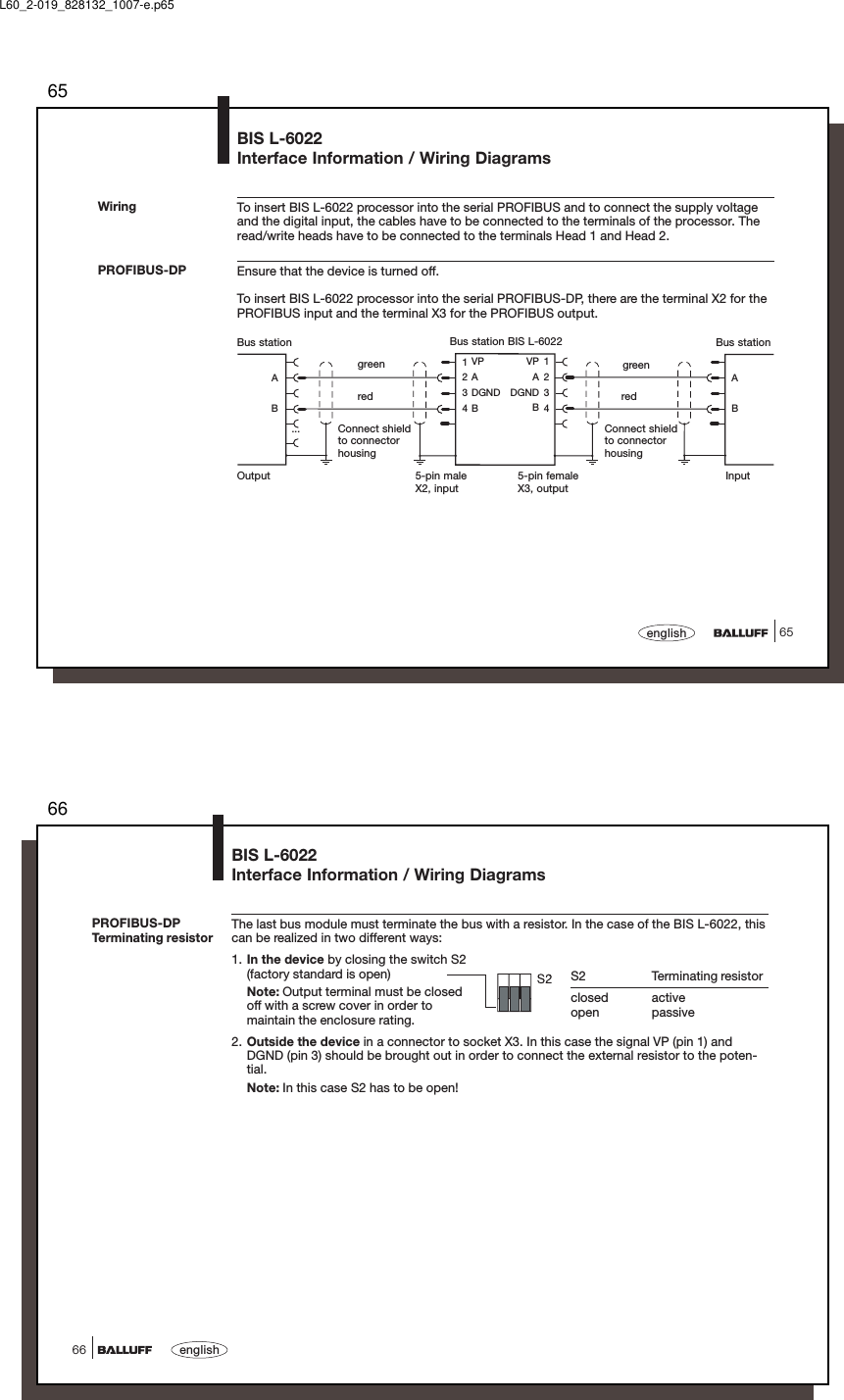
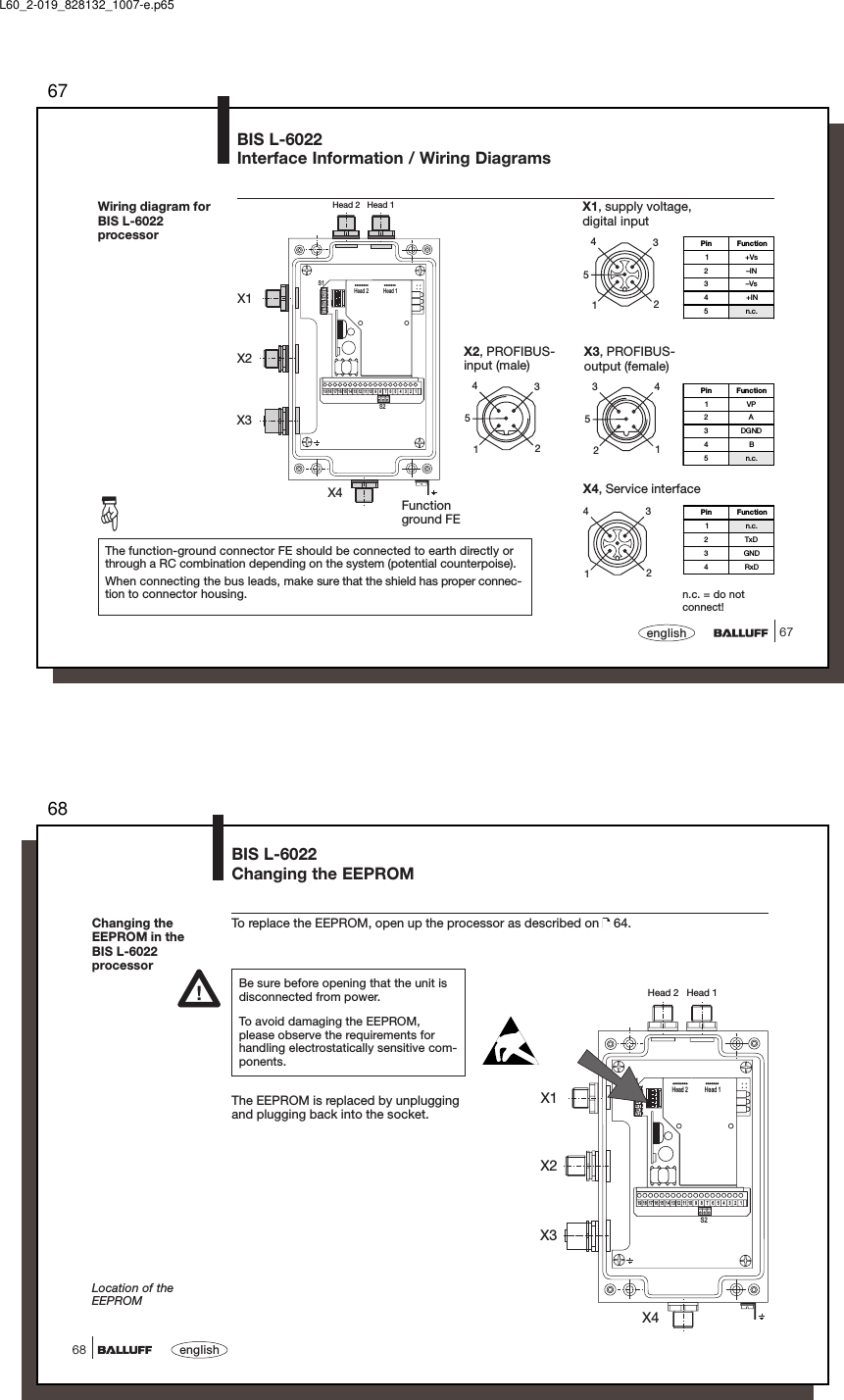
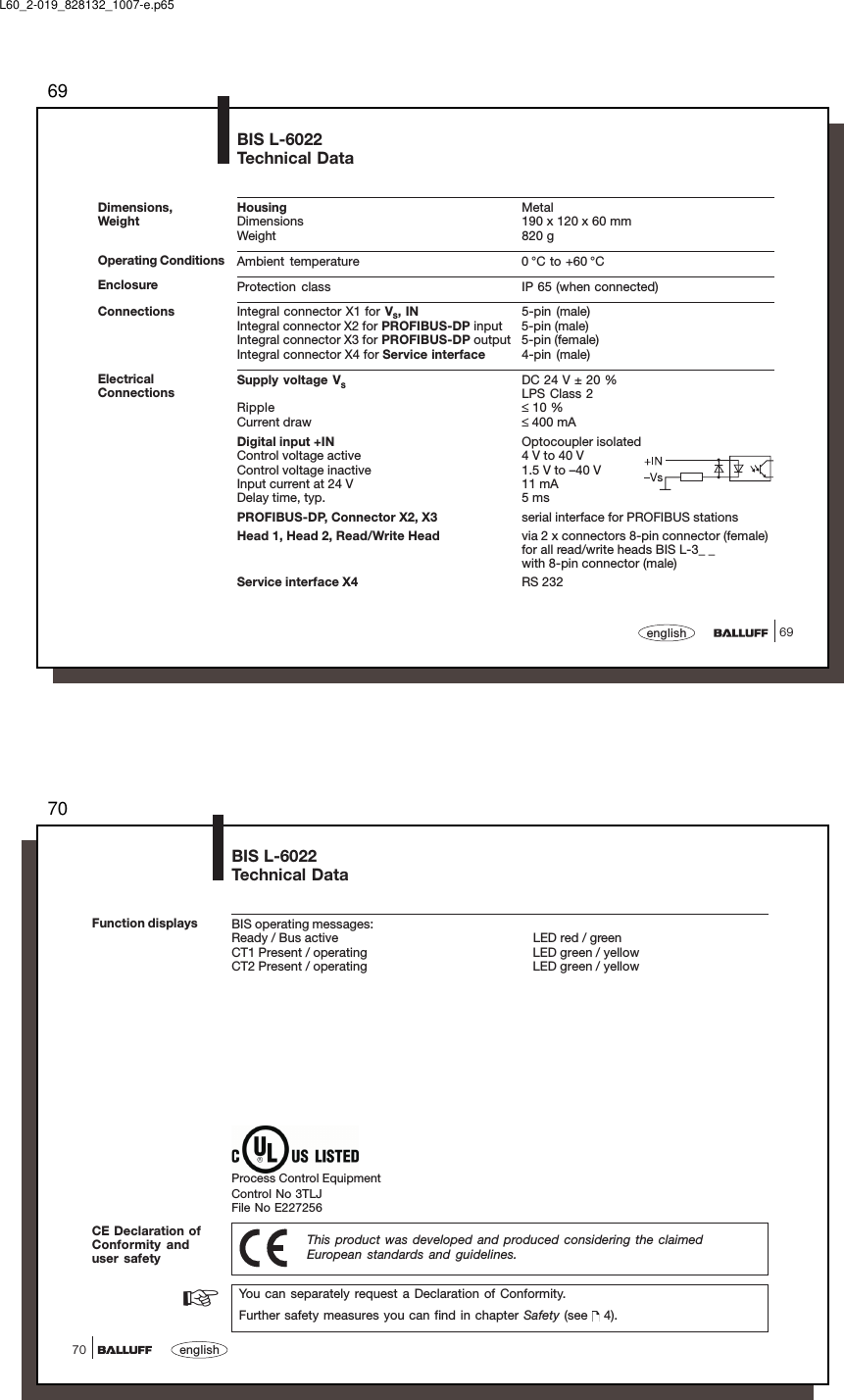
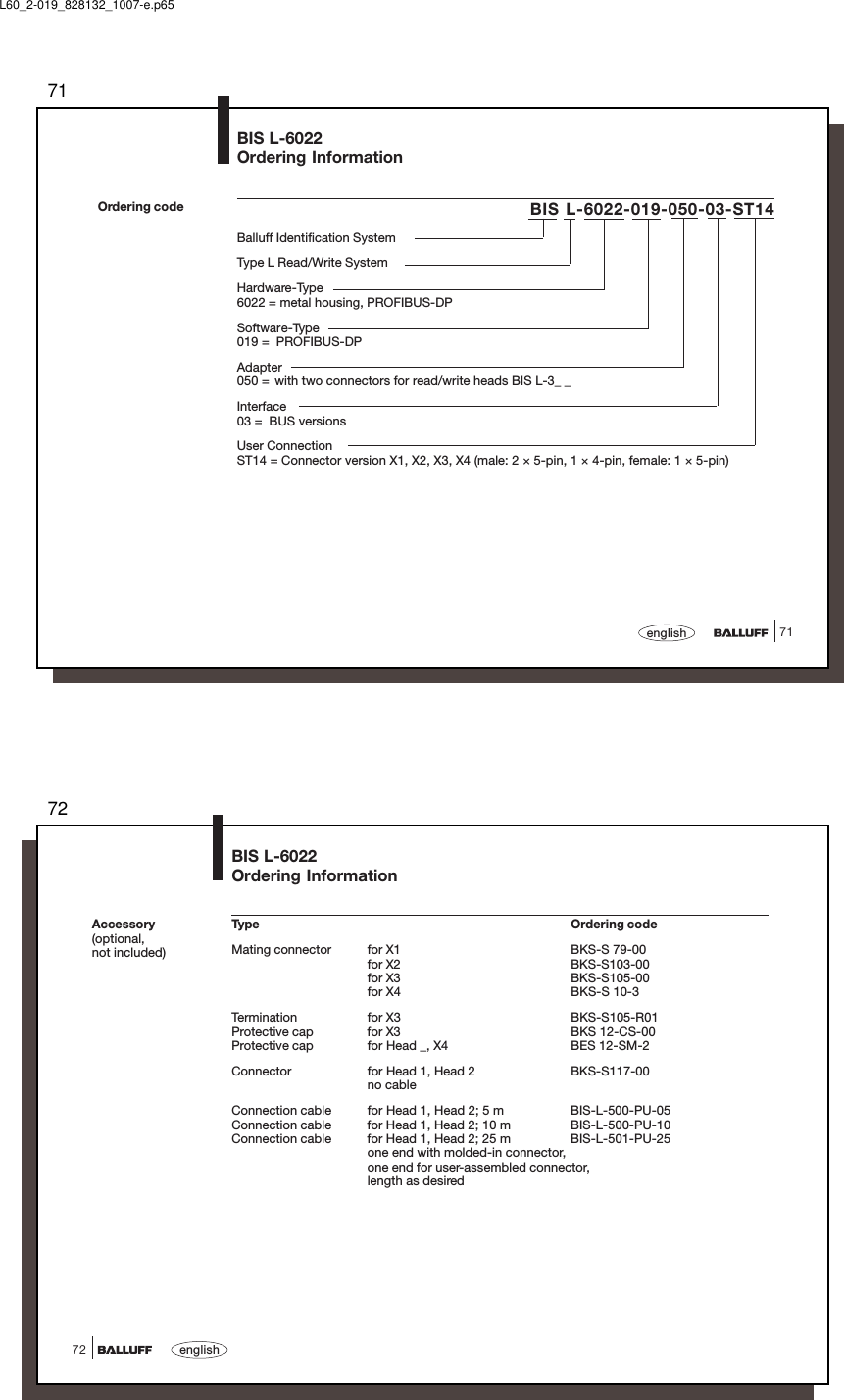
![7373englishSymbols / AbbreviationsDC CurrentLimited Power Source Class 2Function groundESD SymbolLPSL60_2-019_828132_1007-e.p6574english74Appendix, ASCII TableDeci-mal Hex ControlCode ASCII Deci-mal Hex ControlCode ASCII Deci-mal Hex ASCII Deci-mal Hex ASCII Deci-mal Hex ASCII Deci-mal Hex ASCII0 00 Ctrl @ NUL 22 16 Ctrl V SYN 44 2C , 65 41 A 86 56 V 107 6B k1 01 Ctrl A SOH 23 17 Ctrl W ETB 45 2D - 66 42 B 87 57 W 108 6C l2 02 Ctrl B STX 24 18 Ctrl X CAN 46 2E . 67 43 C 88 58 X 109 6D m3 03 Ctrl C ETX 25 19 Ctrl Y EM 47 2F / 68 44 D 89 59 Y 110 6E n4 04 Ctrl D EOT 26 1A Ctrl Z SUB 48 30 0 69 45 E 90 5A Z 111 6F o5 05 Ctrl E ENQ 27 1B Ctrl [ ESC 49 31 1 70 46 F 91 5B [ 112 70 p6 06 Ctrl F ACK 28 1C Ctrl \ FS 50 32 2 71 47 G 92 5C \ 113 71 q7 07 Ctrl G BEL 29 1D Ctrl ] GS 51 33 3 72 48 H 93 5D ] 114 72 r8 08 Ctrl H BS 30 1E Ctrl ^ RS 52 34 4 73 49 I 94 5E ^ 115 73 s9 09 Ctrl I HT 31 1F Ctrl _ US 53 35 5 74 4A J 95 5F _ 116 74 t10 0A Ctrl J LF 32 20 SP 54 36 6 75 4B K 96 60 ` 117 75 u11 0B Ctrl K VT 33 21 ! 55 37 7 76 4C L 97 61 a 118 76 v12 0C Ctrl L FF 34 22 " 56 38 8 77 4D M 98 62 b 119 77 w13 0D Ctrl M CR 35 23 # 57 39 9 78 4E N 99 63 c 120 78 x14 0E Ctrl N SO 36 24 $ 58 3A : 79 4F O 100 64 d 121 79 y15 0F Ctrl O SI 37 25 % 59 3B ; 80 50 P 101 65 e 122 7A z16 10 Ctrl P DLE 38 26 & 60 3C < 81 51 Q 102 66 f 123 7B {17 11 Ctrl Q DC1 39 27 ' 61 3D = 82 52 R 103 67 g 124 7C |18 12 Ctrl R DC2 40 28 ( 62 3E > 83 53 S 104 68 h 125 7D }19 13 Ctrl S DC3 41 29 ) 63 3F ? 84 54 T 105 69 i 126 7E ~20 14 Ctrl T DC4 42 2A * 64 40 @ 85 55 U 106 6A j 127 7F DEL21 15 Ctrl U NAK 43 2B +](https://usermanual.wiki/Balluff/BISL303.User-Manual-1-of-2-pdf/User-Guide-2370932-Page-37.png)